Porsche 924 History & Story
The Porsche 924 emerged as the result of a Volkswagen engineering order which did not materialize. Volkswagen had two sports cars in its portfolio – the Karmann Ghia since 1955 (until 1974) and the VW-Porsche 914 since 1969 (until 1976), so in the beginning of the seventies Volkswagen was looking to develop a successor. In 1971 Volkswagen contracted Karmann to develop the next sports car, internally called as EA 398. EA standed for Entwiklungsauftrag (development assignment). In parallel, Porsche was contracted in 1972 and the project’s code name was EA 425. It is not known if Porsche had interests regarding its own model line with this project. Porsche was focused on racing and on developing the successor to the 911, the 928.
Volkswagen’s demandings on the new sports car consisted of spacy rear seats for children, good luggage space and mechanicals to be used from existing VW and Audi models. Designer Harm Lagaay (born Lagaaij) had joined Porsche in 1971 to work under head designer Anatole “Tony” Lapine and was the main brain behind the visual look of EA 425.
At the same time when the body designs were experimented and honed, the engine and drivetrain components were tested inside vehicles from other manufacturers. Rear-wheel-drive 2-door cars were chosen as test mules. VW/Audi engine and transmission as well as suspension parts plus EA425 unique drivetrain and suspension components were tested inside a BMW 1600 and Opel Manta bodies. The design lines of the EA 425 gave it a sharp nose which meant the VW/Audi engine had to be tilted 40 degrees to fit under the hood. For this, a unique oil pan was made and tested. As the EA425 was meant to be closer to the ground, the wheel arches on the test mules were modified in order for the front wheels to be able to turn. The modified wheel arches and non-original wheels were almost the only giveaways on the mules.
The Karmann EA 398 coupé was developed side-by-side with the brand new hatchback, the VW Golf (Rabbit) and was designed by Giorgetto Giugiaro. Porsche’s EA 425 was probably too distant from VW Golf and too expensive (too sophisticated) for Volkswagen, so it was decided to stop the EA425 project in 1973. The new Volkswagen coupe, designed by Giugiaro and developed by Karmann, was launched in 1974 and named as a Scirocco (interestingly it was launched before the EA 337 VW Golf it was based on).
When Volkswagen decided to end the EA425 project, they offered Porsche to buy back the design and to manufacture the car at the Audi plant in Neckarsulm. In 1973 Porsche was the world dominator in racing and had put great knowledge into the car. Thanks to its front engine and rear gearbox layout, the EA 425 was one of the best handling street cars Porsche had ever developed. Its sleek design made it very aerodynamic, the bugs didn’t stick to the windscreen like with the 911. The interior and boot were more spacious than in the 911. Yes, Porsche was interested to launch the EA 425 as a Porsche if the price was good. The price was agreed – who else would have been interested to buy an internal project from other manufacturer. Volkswagen would also benefit from the fact that its parts would be used and its factory for assembling the cars for Porsche.
No single body panel from the Volkswagen EA 425 project was used and everything was redesigned for the future entry-level Porsche.
The 924 was introduced to the world on November 15, 1975, which was the embargo date for the 924 photos. The press launch was organized at the Mediterranean port of La Grande Motte near Montpellier, France.
The front engine and rear transmission configuration for the 928 and the EA 425 was decided at almost the same time in 1972, but the 924 became the first transaxle Porsche with its ideal weight distribution to hit the streets. The only area where the entry level Porsche stepped backwards, were the brakes. Since already the 356 C, all the Porsches had had four disc brakes, but now the 924 moved back to the rear drum brakes. While the early VW Beetles had 5-bolt wheels, in the meantime they had switched to 4-bolt wheels. 924 now used the VW running gear parts from the 4-bolt wheel era.
In 1976 the 924 was available only in Europe. As the production of the 914 had ended, Porsche customers in America were offered a G-model 912 (911 with 4-cylinder engine) for 1976 as a temporary entry level model until the 924 was made available for America.
To boost advertising, it was planned to create a record setting 924. Development of a turbocharged 924 Nardo record car started in 1976 in Weissach. It was a top secret project with the aim to cover 10.000 mile distance on Nardo oval track in Italy at an average speed of over 157 mph/252 km/h – a record set by Mercedes C111 in 1976.
The modified 2-litre engine developed around 250 hp with the turbocharger and the car was capable of reaching 280 km/h (174 mph) thanks to its very low drag coefficient of 0.268 (0.35 on standard 924). Still, that meant it was not very easy to beat the average speed record set by Mercedes. When Mercedes renewed its record in 1977, the 924 Nardo project was immediately cancelled even though the track was already reserved.
It was almost four decades later that public at large heard of the 1977 Porsche 924 Nardo project. In 2014, the car was painted matte light gray before it was exhibited at the Porsche Museum the same year.
The Porsche 924 was introduced in USA in 1976 as a 1977 model. Although the 924 was quite economic on fuel, to cut the emissions further, the engine was detuned for America and Japan. The first American sales brochure even skipped to mention the power figures and concentrated on mentioning only low fuel consumption numbers. While the European 924 had 92 kW, the US and Japanese models initially had only 74 kW. It was more than the 66 kW entry-level 912 E it replaced, but still not much. The export-924 quickly got some power back and was then sold with the 82 kW engine. It never got the 92 kW European spec engine, though. In addition to the 4-speed manual gearbox, a 3-speed automatic was available. It was fully automatic, regular automatic so to speak, a first on Porsche. Sportomatic half-automatic gearboxes had been available for the 911, 912 and 914, but not the fully automatic one. The detuned and heavier export 924 with the optional 3-speed automatic made an awfully slow Porsche configuration.
While the plastic bumpers in Europe were just bolted to the body, the aluminium US bumpers were installed on telescopic shock absorbers. The US bumpers couldn’t be made flush with the body as they were meant to move in and out on contact with no damage to the bodywork.
Porsche had won the world racing championship in 1969, 1970, 1971 and won again in 1976. On this special occasion, the 924 World Championship edition was created in December 1976 and sold in 1977. It was called as the Martini Edition, although that was not the official name. White car with matching white wheels looked already good and the Martini Racing stripes added to the whole. The interior was also special – red carpet, red/black seats with blue piping and Martini stripes on the headrests. A plaque on the centre console read “Weltmeister / World champion / Champion du monde / Campione del mondo – 1969/1970/1971/1976”. The interior of the “Martini edition” was coolest a 924 would ever get.
In 1977, for model year 1978, oval muffler with oval exhaust pipe end replaced the earlier “drinking straw” style exhaust pipe end and the 5-speed transmission was made available in Europe.
In the beginning of 1978, 924 edition for Switzerland was available in golden metallic with matching beige (golden) cloth with pinstripes and brown leatherette. The option code was M426, like a year earlier for the World Championship edition. In USA, a M426 car was also sold in 1978, called as “Limited edition”. The car was painted in Dolomite gray metallic with white and black narrow stripes added to the body, the interior was black with black and white checkered cloth. Although called “Limited edition”, it was not limited edition as there was no numbering on the cars and it is not even known how many cars were ordered with M426 option for USA.
In April 1978, a production milestone of 50.000 Porsche 924 was reached. In September, another cosmetic edition was launched, this time only for the French market. The option code was M427 and the car was painted Dolomite gray metallic with added black and silver stripes (like the “924 Limited Edition” for USA).
Now, it was time to make a serious 924. It was in 1977 or even earlier, when the guys in Weissach fitted a 924 with a V6 engine from another manufacturer to study the possibilities to get more power to the 924. Like it was already with the 917 racing car when the 12-cylinder turbo engine was preferred over the 16-cylinder naturally aspirated, the idea of the 6-cylinder 924 was dropped and the 2-litre 4-cylinder turbo engine from the 924 Nardo project was developed for series production.
In 1978, for model year 1979, the 924 Turbo, internally called as 931, was introduced in Europe. It had 125 kW of power and Porsche disc brakes all around. This also meant the 931 got real Porsche wheels with 5 bolts. The 931 accelerated from 0 to 100 km/h in 7.8 seconds, which meant it was a quick car. The top speed was 140 mph/225 km/h and this was “tested” again and again by German customers on the Autobahns which didn’t have speed limits. The so-called sports steering wheel had 3-spokes and the gear lever was now a nice looking one instead of the earlier unit. For the 1979 model year, the PORSCHE and 924 metal scripts on the rear panel were replaced by a decal. American and Japanese customers now got the cars with 5-speed gearboxes as standard, while in Europe the 5-speed was still optional.
An endurance test on public roads was carried out with one of the first series production 924 Turbos. As the result would be unknown (technical problems, accidents), it wasn’t officially a Porsche project. The car had Austrian registration and was driven by Austrians Gerhard Plattner and Rudi Lins, a retired Porsche racing driver. Their car was sent to New York, where on January 6, 1979, the test started. The route took them to Montreal in Canada to Fairbanks in Alaska, where after 4679 miles/7529 km was the first stop long enough to allow the drivers to sleep in bed. Then they drove down to California, to Florida and back to New York from where the car was airfreighted to Frankfurt, Germany. From there it was driven up to Narvik in Norway and then down to Zagora in Morocco. Then more zig-zagging was done: Lisbon (Portugal), London, Bologna (Italy), Munich (Germany), with the finish in Vienna, Austria, on February 5. They finished after 31 days and had covered 23.169 miles/37.279 km. The car was punished through extreme temperature range: from -51°C/-60°F in Alaska to +32°C/+90°F in Morocco. The engine consumed 3 litres of oil (Mobil SHC). The engine and gearbox were sealed before the event by Austrian motoring organization ARBÖ.
Also in January 1979, Jürgen Barth and Roland Kussmaul from Porsche Motorsport had entered a 924 Turbo rally car to the Monte Carlo rallye (they actually had signed the car up as a “924 Carrera GTS” although we would like to save that name for later use). The turbo engine had around 140 kW in its motorsport trim. The 924 Rallye Turbo finished the rally week in 20th position. That was quite good result as around 160 cars had started the rally.
For years Porsche engineers had worked on the real Targa version of the 924, but it didn’t go into the series productiion due to the cost and chassis stiffness issues. A T-bar roof was also tested.
The Sebring 12 hour race in March 1979 was dominated by Porsches – 12 first places went to Porsches! In USA a 924 Sebring ’79 special edition was made available. It was again a cosmetic edition. Red cars had black-white-yellow stripes on the body and red-blue-black tartan interior. The option code for the Sebring edition was M429.
For other markets than USA, another golden edition 924 was made available in addition to the earlier golden Switzerland edition. The new golden edition cars were called as 924 “Dobloon” or 924 “Cork”. The car looked like the Switzerland edition 924, just that the interior was made even a bit more special thanks to golden beige piping on the seats. The option code was M428.
At the IAA Frankfurt motor show in September 1979 the prototype of 924 Carrera GT was shown.
In 1979, for model year 1980, the 924 Turbo was introduced in America and Japan. The power was decreased and the US version was initially not getting the Porsche brakes and 5-bolt wheels as standard, but only together with the “S” sports option M471. The first 600 Turbos for USA – the US 931 launch cars (M420) – were all painted Dolomite gray metallic.
The rear panel decoration was changed again for model year 1980. The ‘924’ decal got new design and the ‘PORSCHE’ was moved to the lower edge of the rear panel, just above the rear bumper.
From model year 1980, the fuel filler flap was a new feature (earlier cars used to have externally visible VW fuel filler caps). The rear spoiler of the Turbo became optionally available also for the normally aspirated 924. The 15″ 4-bolt USA 924 Turbo mesh wheels became available for all 924. The basic (plastic) exterior mirror got a new design. The 4-speed gearbox was dropped also in Europe, and the 5-speed became a standard throughout the world.
In September 1979 Porsche introduced a 924 racing car (internally called as 933) for the 1980 SCCA D-production class in USA. The first 924 SCCA was built in Weissach, Germany, the rest as kit cars in USA. The 924 SCCA had type 933 normally aspirated engine with Bosch Kugelfischer fuel injecton, dry sump, 2039 cc (1983 cc on regular 924), lightened production bodyshell with flared wheel arches, plastic front spoiler, new steering, 911 Turbo brakes, completely new suspension including additional rear axle coil springs, adjustable front/rear brake distribution, 7×15 BBS 3-piece wheels, 24×8.5 Goodyear racing tyres, 5-speed Porsche gearbox with ratios available for different circuits, 80% limited slip differential and a 50 litre safety fuel tank. The empty weight was 970 kg/2140 lb and the engine produced 132 kW at 7000 rpm. It was a great car to drive!
In 1979 Porsche participated in a German governmental project for alternative fuels and ten 924 were created with electronic ignition to be able to operate on M15 (15% methanol) fuel.
924 with turbo engine and huge aerodynamic package was in development in Weissach for the 1980 Le Mans 24 hour race. The car got its wheels to the ground in January 1980, but couldn’t be tested in the cold weather of Germany and was taken to France for tests.
For the 1980 Le Mans 24 h race, Porsche factory racing team fielded three cars for the GTP class, called as the 924 Carrera Turbo. To distinguish them from other 924 Carreras (which all were turbos), lets call these Le Mans cars as 924 Carrera GTR Turbo 2.0.
The task set for the 924 for the Le Mans is not so clear as the best of them qualified on the 34th position. All the cars finished the race, which is a result on its own and the best of them managed to score 6th driven by Jürgen Barth and Manfred Schurti. As an innovation, the Le Mans 924 had tyre pressure monitoring system.
After the 1980 Le Mans 24 hour race in June, a 924 Le Mans cosmetic edition was offered. White cars were decorated with “LE MANS”-lettering and yellow-black-red stripes around the car. The option code for the car was again M426, a code used earlier on different special edition 924.
In 1980, for model year 1981, the Turbos got 5 kW more power for all markets. The European version now had 130 kW and the version for America and Japan 115 kW.
To homologate the Porsche 924 Carrera GTR for the 1981 racing season in a class for series production cars, at least 50 street legal 924 Carrera GTS had to be built. In addition, more than 400 Carrera GT were made. Some 924 Carrera GTS were made in ClubSport versions that was a step between the GTS and the GTR. The GTS CS cars had more power than regular GTS and they were equipped with safety cage, bucket seats etc. The internal designation for the 924 Carrera was 937 for LHD cars and 938 for RHD cars. In the same manner, when the internal code for the LHD 924 Turbo was 931, the code for the RHD car was 932.
For 1981 racing season Porsche offered the 924 Carrera GTR customer racing version. Instead of the boxed wheel arches it had rallye-style wheel arches. And these cars were actually used also for rallying.
In the beginning of 1981, a 924 Weissach edition was offered in USA. This cosmetic edition was painted in Pewter Metallic. The option code was M459.
At the 1981 Le Mans, the factory team fielded two Porsche 936/81 and a 924 Carrera GTR Turbo 2.0 and a 924 Carrera GTR Turbo 2.5, actually signed up as 924 GTP LM, as it raced in the GTP LM (Grand Tourisme Prototype Le Mans) class.
The 2.5-litre 1981 Porsche Le Mans car has later been mostly called as 944 Le Mans as this was written on its engine (which’ internal code was 949 to add to the confusion). As the 944 hadn’t debuted yet, the car was signed up as a 924. And it was a 924 Carrera GTR, just with the 2.5-litre experimental Porsche engine instead of the 2-litre unit.
With the 2.5-litre 16V turbo engine, Walter Röhrl and Jürgen Barth finished 7th overall at the 1981 Le Mans 24h race, so it was another success for the 924 Carrera GTR. The 944 LM engine was the first Porsche engine to use fully electronic fuel injection system in racing. The 2.5-litre turbo Porsche was not among the quickest, but it did it with the Porsche quality and durability. It spent the shortest amount of time in the pits.
Later in the season, some customer teams were using hybrid 924 Carrera GTRs – the front was from the customer version, but the boxed fenders from the works version.
In the summer of 1981, a Porsche 924 driven by Catherine Kizer, Fred Baker, Bob Nikel and Gary Witzenburg, won the Longest Day of Nelson 24 hour showroom stock car race in Nelson Ledges, Ohio, USA.
In 1981, Porsche marketing guys discovered they had missed the chance to offer special edition Porsches on the occasion of 50 years of Porsche constructions. The Porsche company was founded in April 1931. Then, in August 1981 (as 1982 models), all production models (911, 924 and 928) were optionally offered with gray exterior and special interior cloth plus a stitching looking like Ferry Porsche’s signature on the headrests. The option code for this special 924 edition was M402. It was the second coolest special edition 924 after the Word Championship (“Martini”) editon.
From December 1981 (model year 1982), another cosmetic version was available, once again only in Switzerland. It looked almost like the Le Mans edition, white car with yellow-black-red stripes around the car, but without the “LE MANS”-lettering. The option code was M449.
Although the 924 sold well, its sales were always boosted with special editions. In the beginning of 1982, another “edition” was offered in Italy. These black cars were ordered with option code M426 (like the MY77 Martini, MY78 Swiss and US editions, MY81 Le Mans edition).
As the Porsche 944 was introduced in September 1981 (as a 1982 model), the importance of the 924 decreased in Porsche’s portfolio. The 944 was introduced for the US market a year later and at the same time the sales of the 924 were stopped in the USA. So, the last model year for the US 924 was 1982. In Europe the 924 was sold parallely with the 944. The 931 was kept in production only for Italy for the 1983 and 1984 model years, probably because of the lower taxes for the 2-litre cars compared to the 2.5-litre 944.
For the 1986 model year, the 924 was replaced by 924 S, which had the 2.5-litre engine from the 944. With the “S”, the 924 returned to the USA. The 924 S was only available with the catalyst, so the engine produced 110 kW (European 944 without the catalyst produced 120 kW). The 924 S was almost 20% cheaper than the 944, although the production cost must have been quite the same. In addition to the 944 engine, the the 924 S had disc brakes all around and 5-bolt Porsche wheels like the 924 Turbo. While the 924 Turbo was visually a serious car with its ribbed front valance, air intakes in the nose panel and in the bonnet, the 924 S is a wolf in the sheep’s skin. Maybe not exactly a wolf, but the 924 S was lighter than the 944.
One very special Porsche research and development car was made around 1987. Its front spoiler looked as it came off the 944 Turbo, the headlamps were from the 924 Carrera GTS, the dashboard from 928 and the whole car was built on tubular frame with the engine fitted in the middle, behind the two seats. The rear wing was in 959-style, but the car looked most similar to the 924 when comparing to other Porsches.
Model year 1988 was the last for the 924 S and the power was raised to 118 kW in August 1987. A “924 S Le Mans” edition was offered as a 1988 model. It was another of the countless cosmetic editions of the 924. The 924 S Le Mans was available in white or black and there was a “Le Mans”-lettering on the sides together with the stripes (the design was different from the earlier 924 Le Mans edition). The option code for the 924 S Le Mans edition was M755. For USA. M756 924 S Special Edition was offered for the last model year. All cars were black with gray/burgundy interiors, were fitted with M030 sports suspension, 16″ wheels and commemorative plaque. For the last model year, the Porsche Exclusive department offered a spoiler kit for the 924 S. It included front spoiler, side sills and rear spoiler (the latter in the 944 Turbo style). The spoiler kit looked quite good, although a bit heavy. Interestingly, it was manufactured by the BBS wheel company.
A Porsche 924 “S2” with 2.7 litre engine and 944 interior was considered for MY1989 and a few prototypes were made in 1988 as 1989 models by the VIN code. It was interesting to see the newer type interior (944.2) in the 924. The 944 had got a completely new interior in 1985, while the 924 was made with its original interior until 1988.
There was at least one 924 S prototype (also 924 S2?) which had completely redesigned front and rear. The usual 924 bumpers were removed and new flush spoilers were created for the whole front end and rear end. The rear bumper went up to the height of the lamps and the rear lamps were housed in the rear bumper. This design was later used on the Porsche 968.
The Story – Pictures & Details
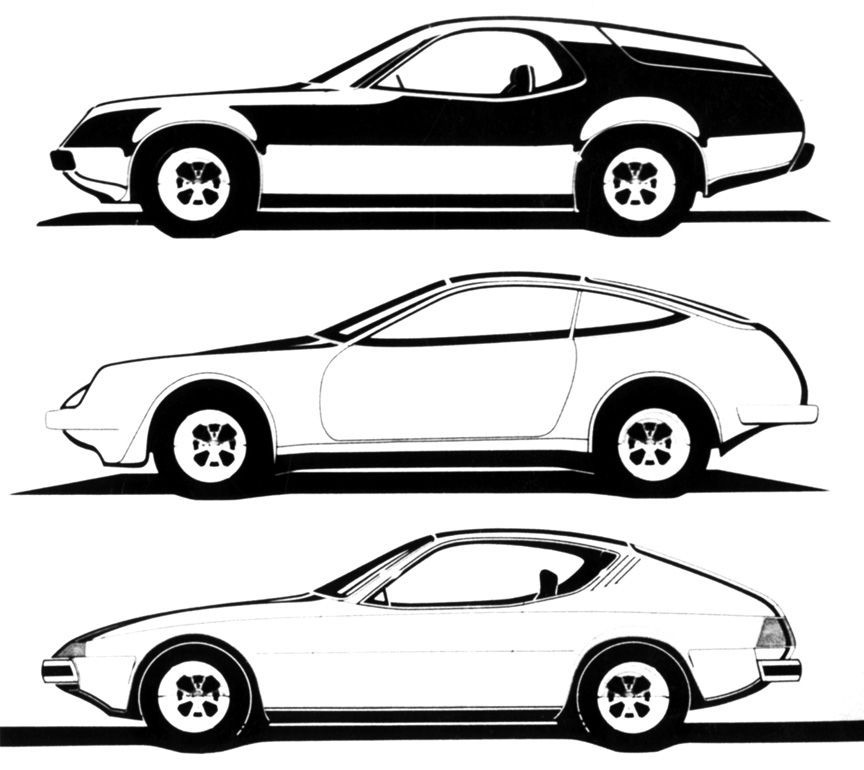
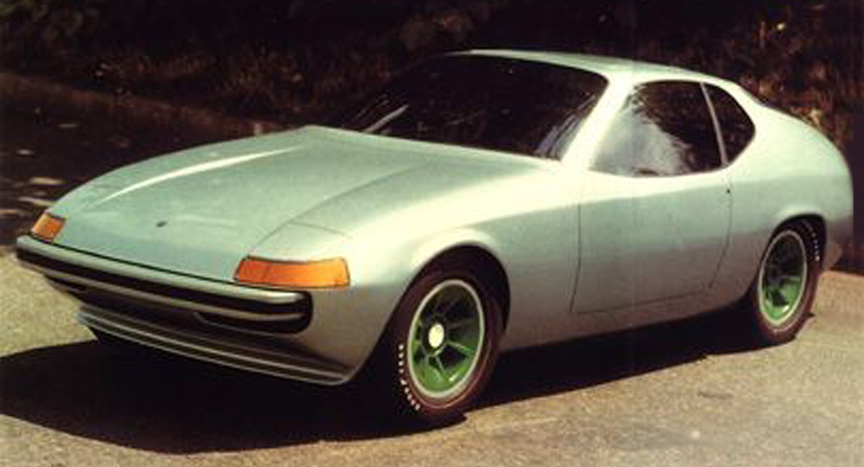
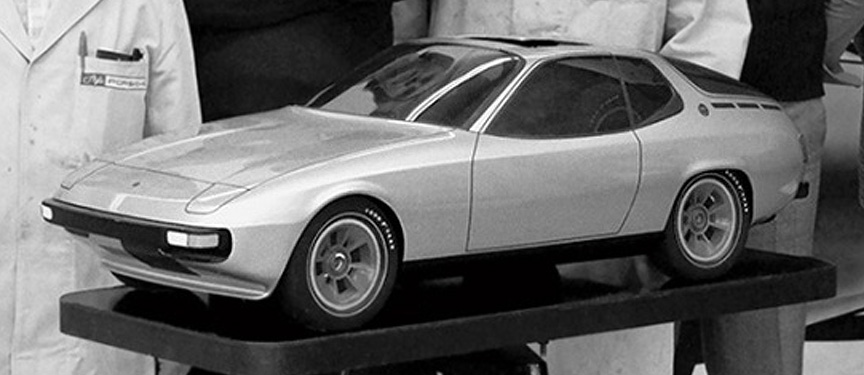
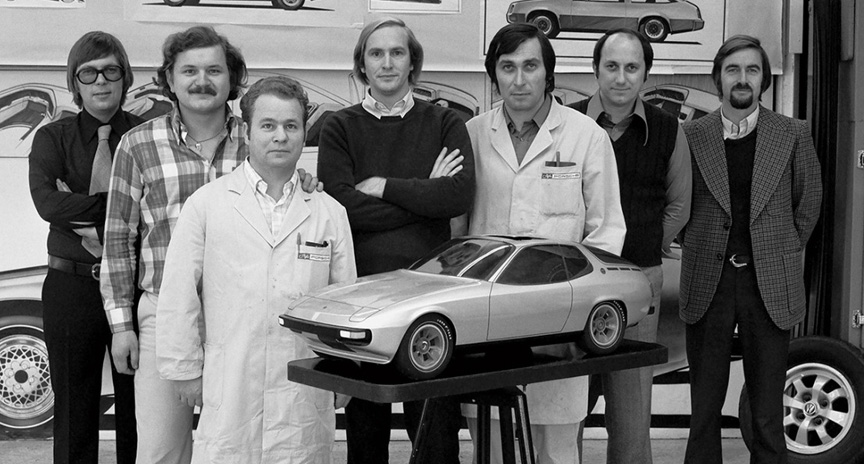
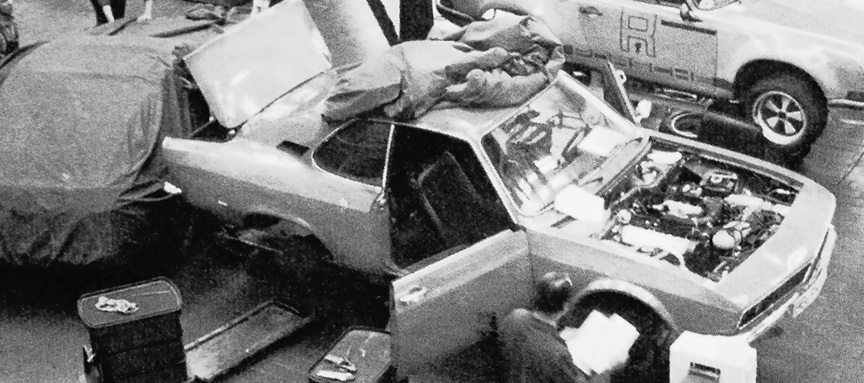
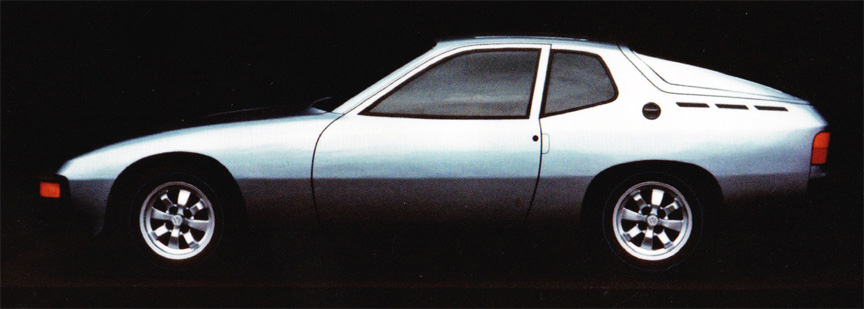
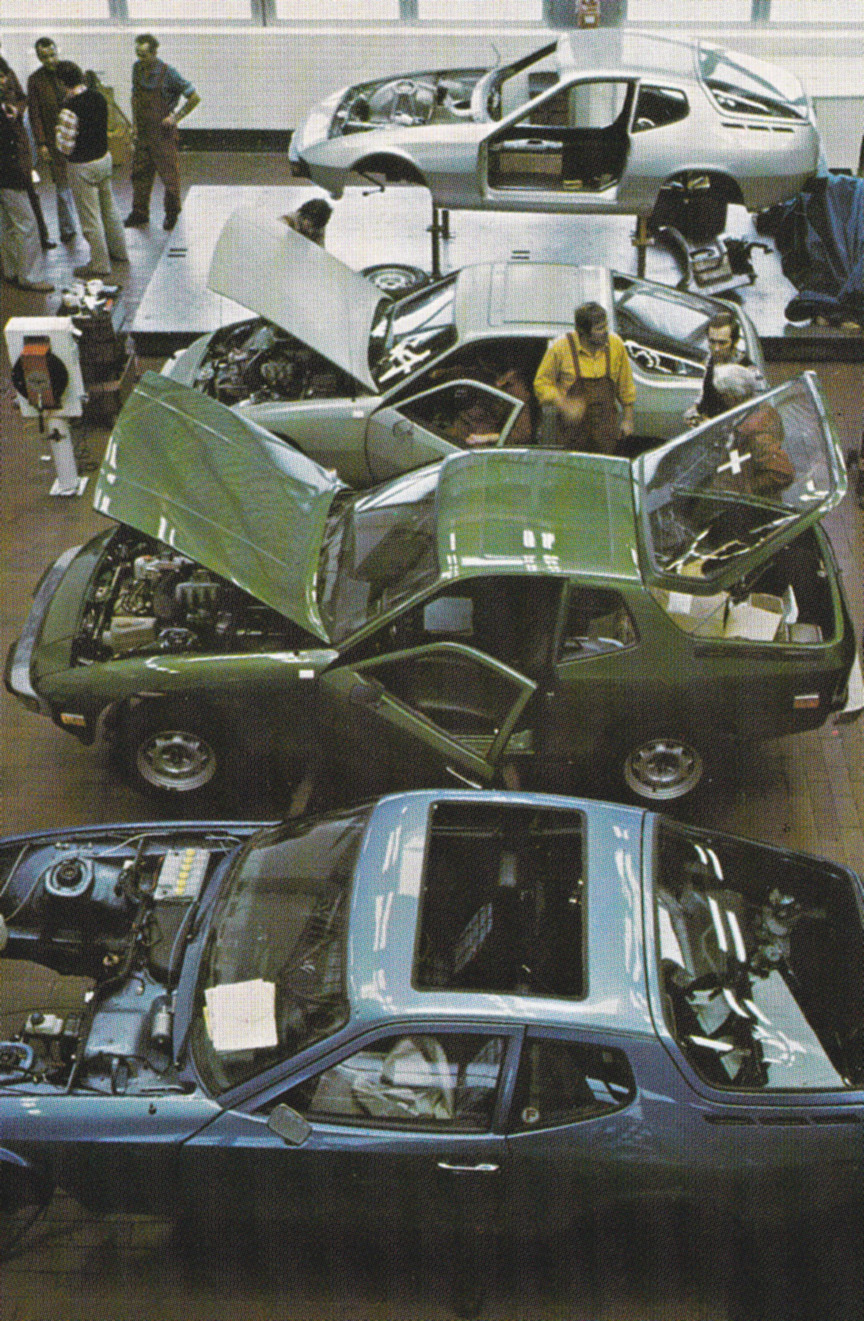
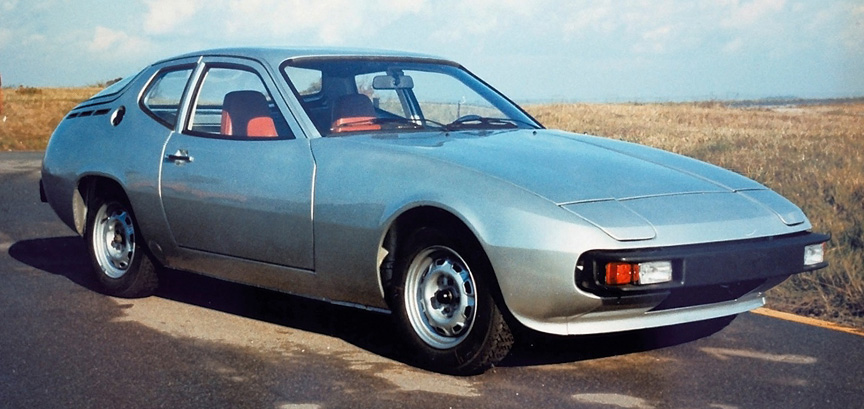
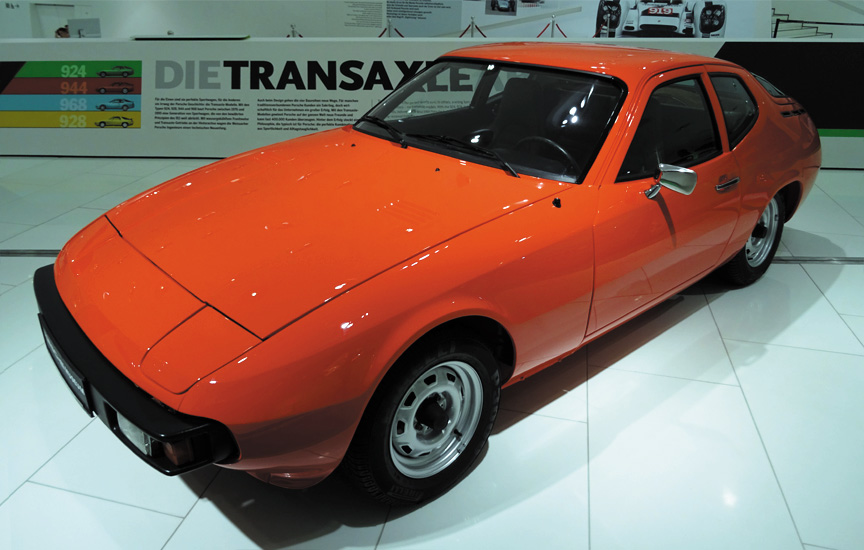
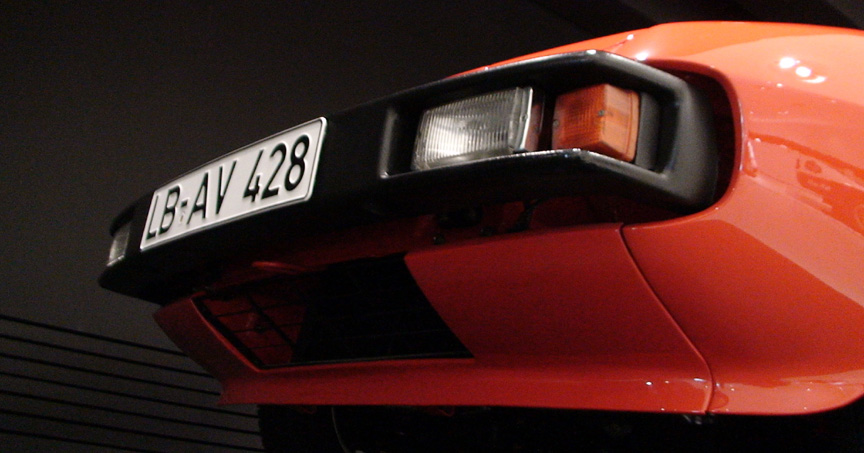
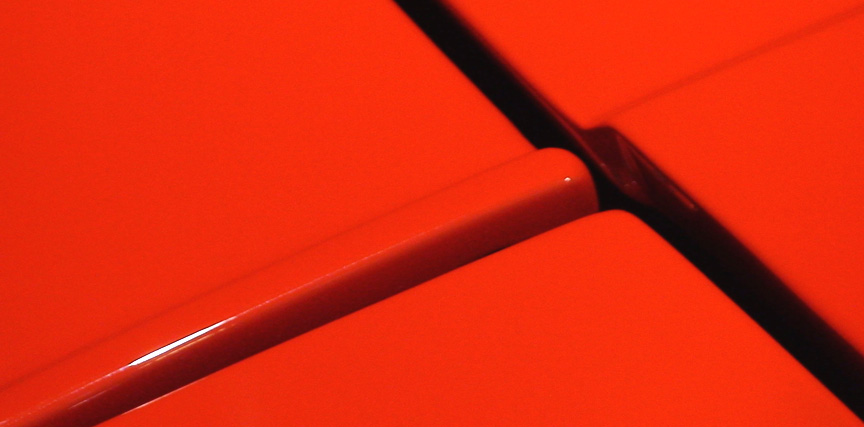
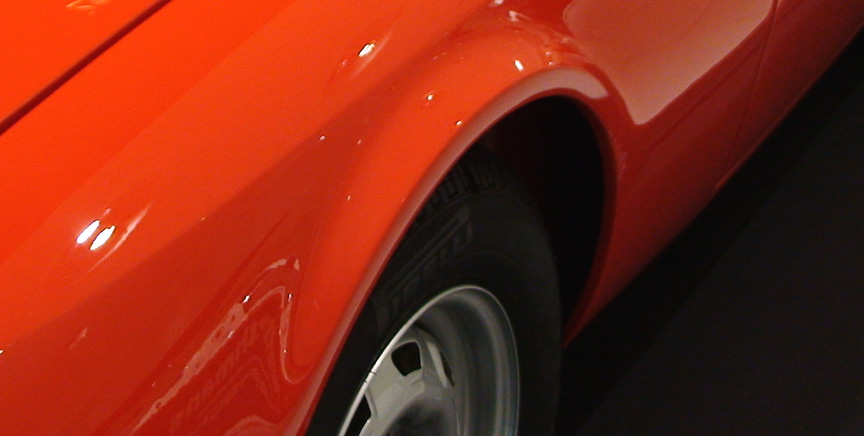
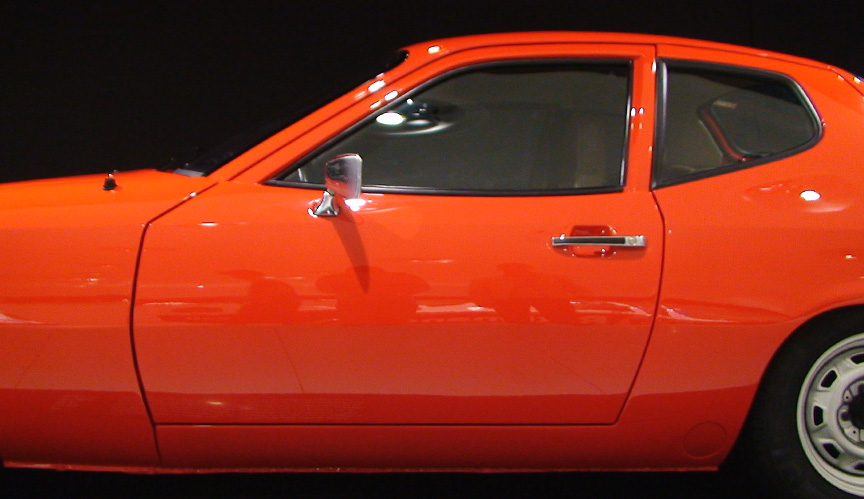
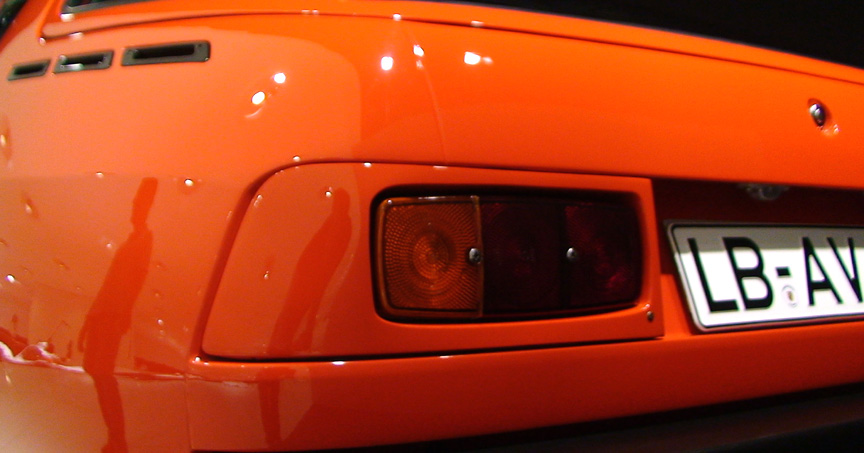
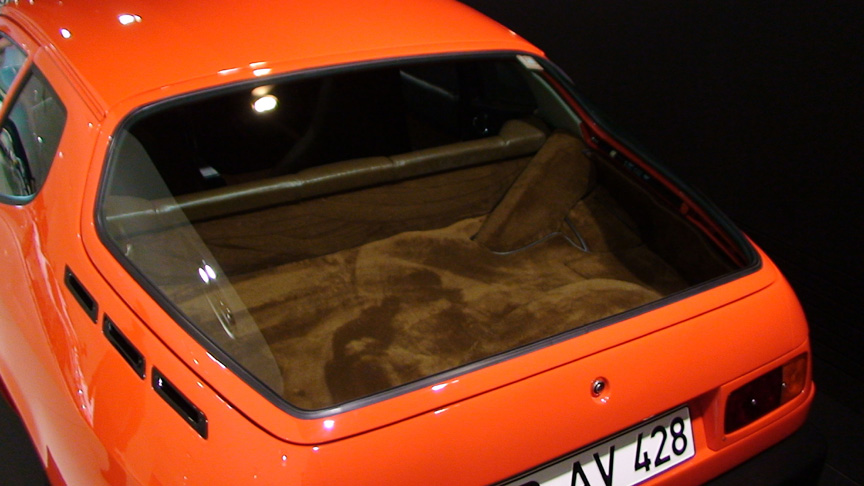
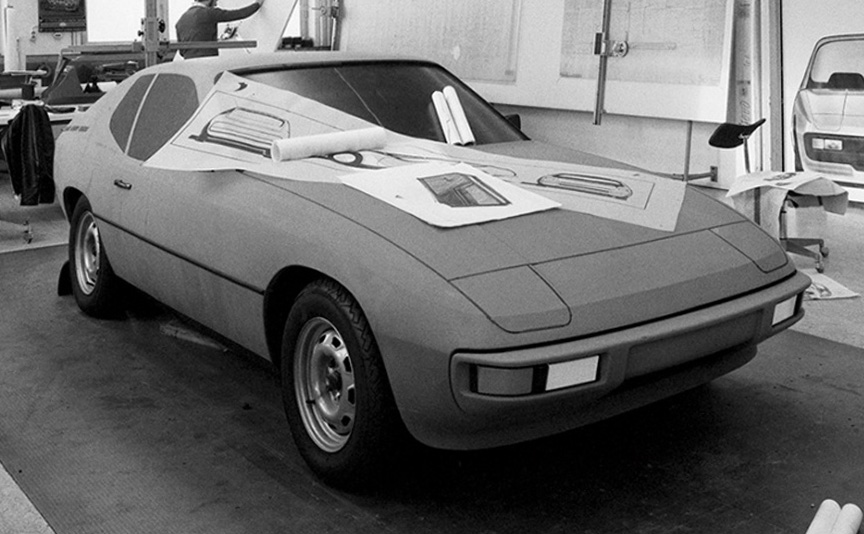
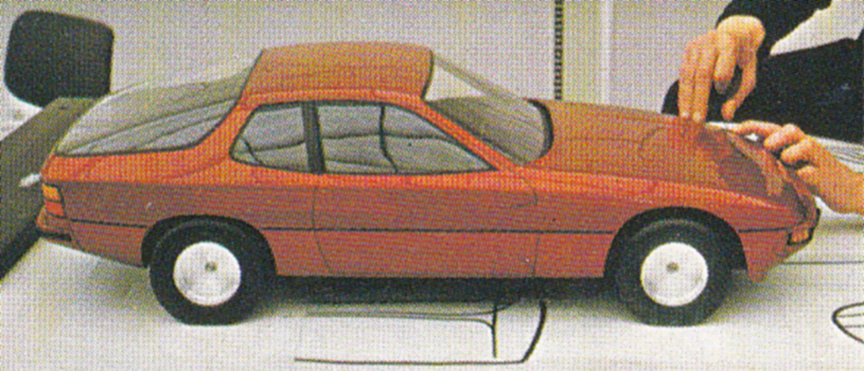
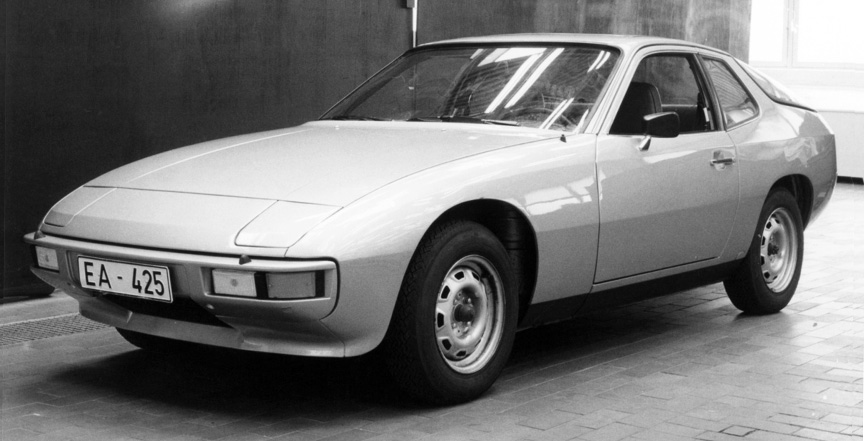
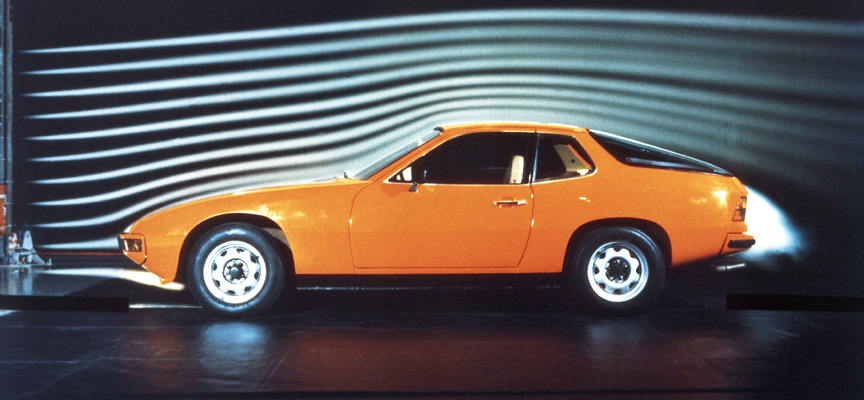
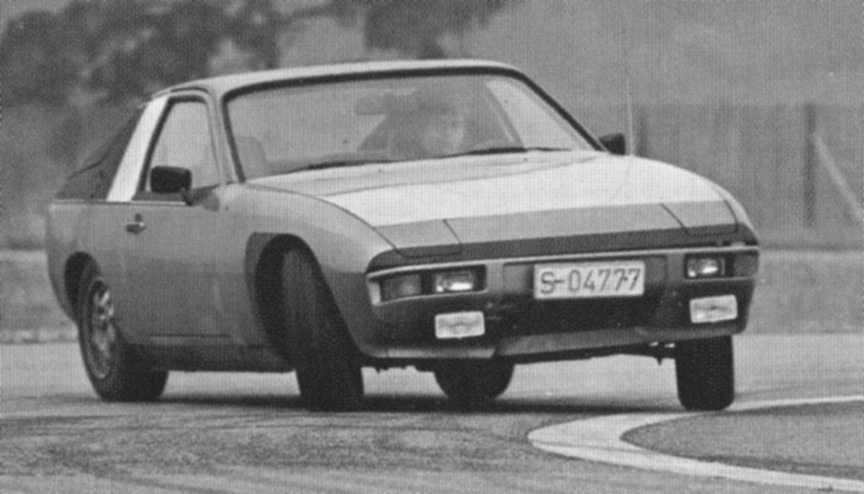
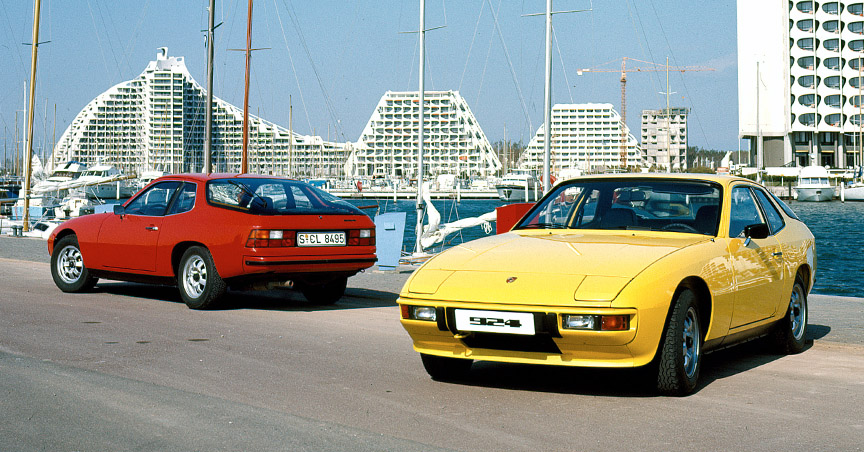
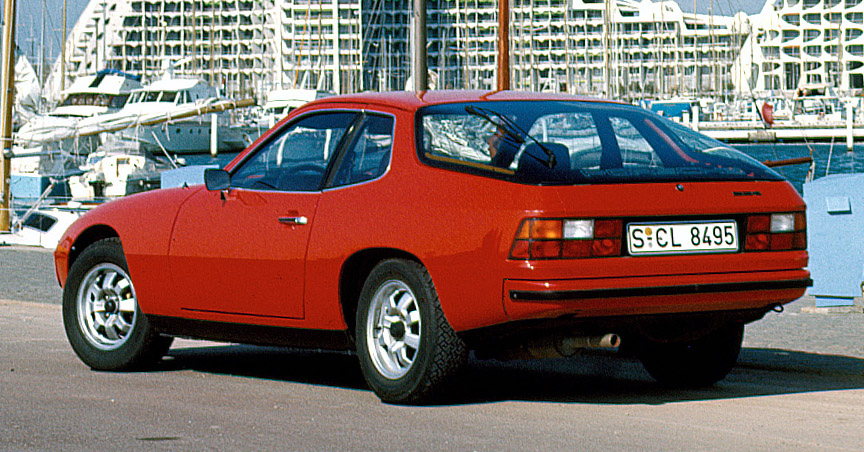
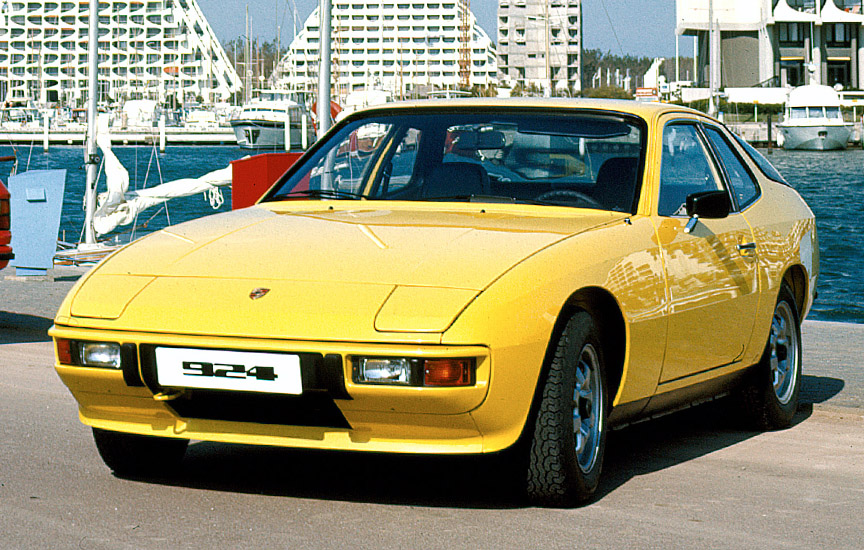
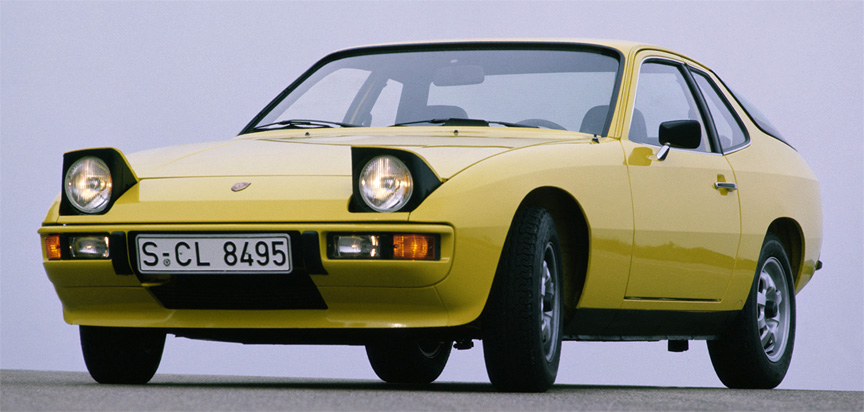
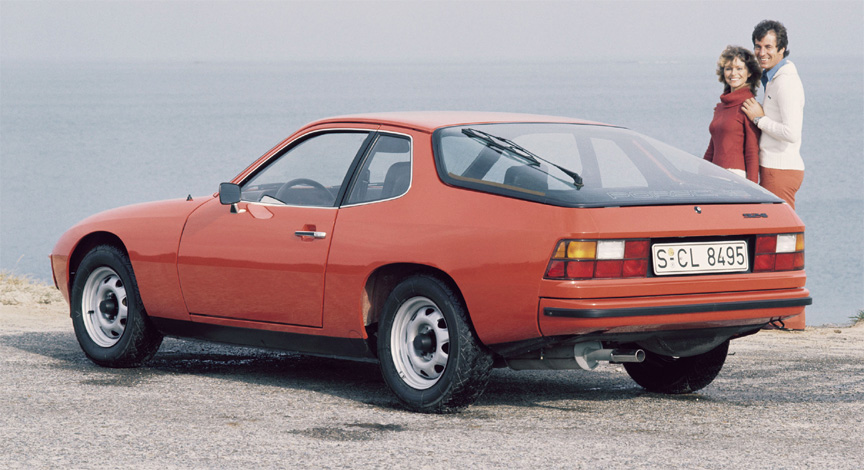

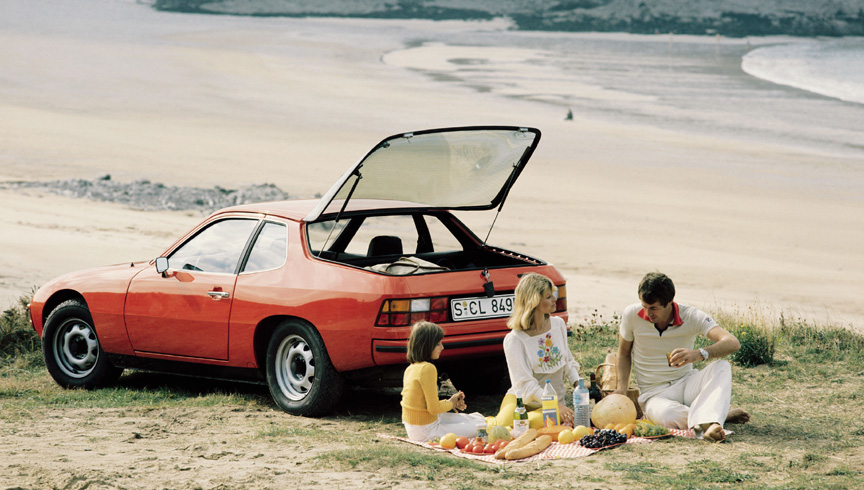
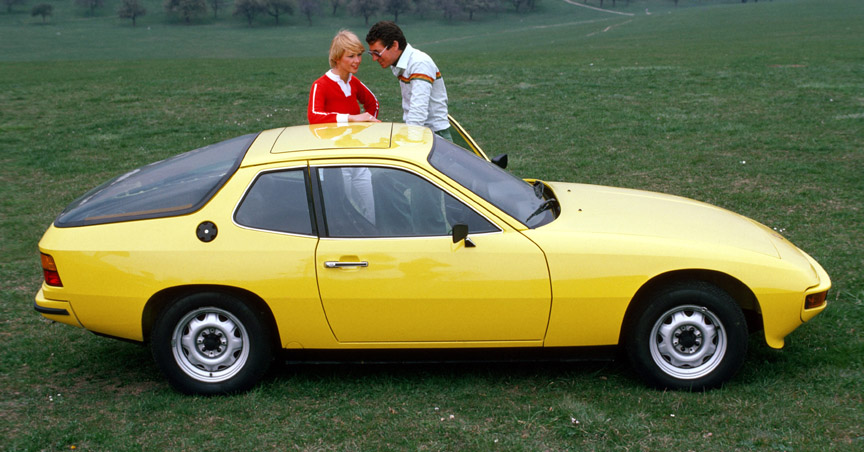
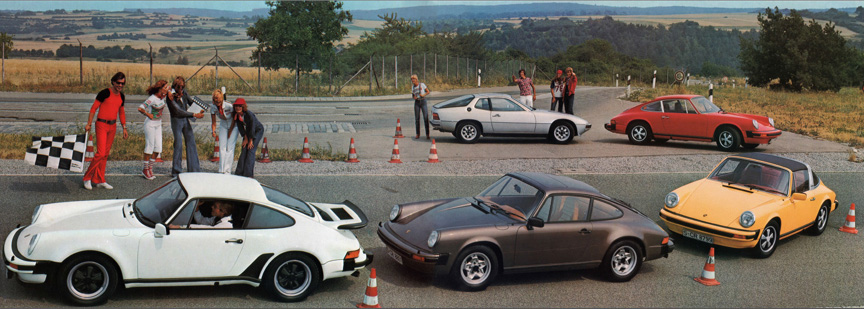
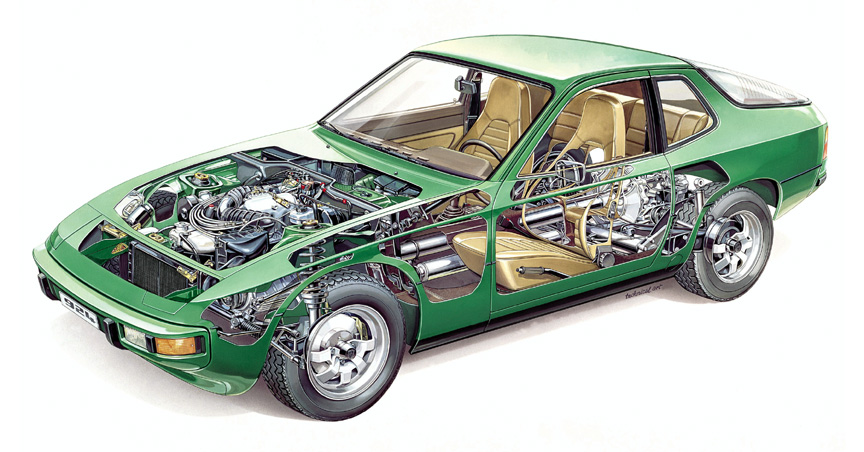
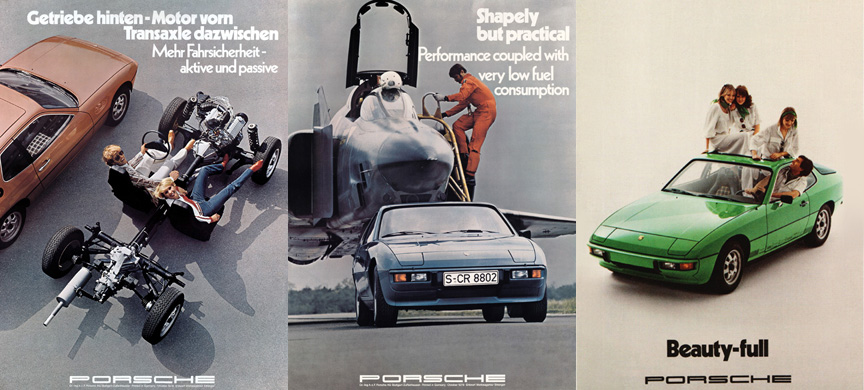
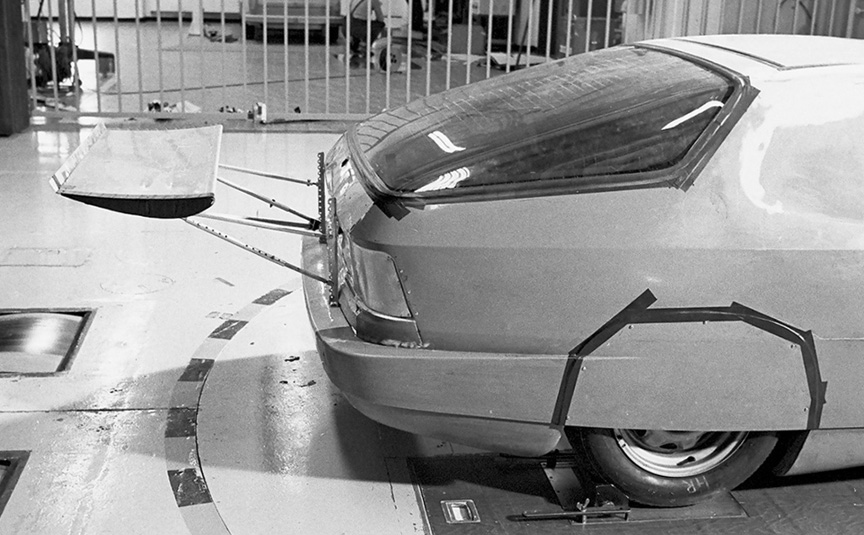
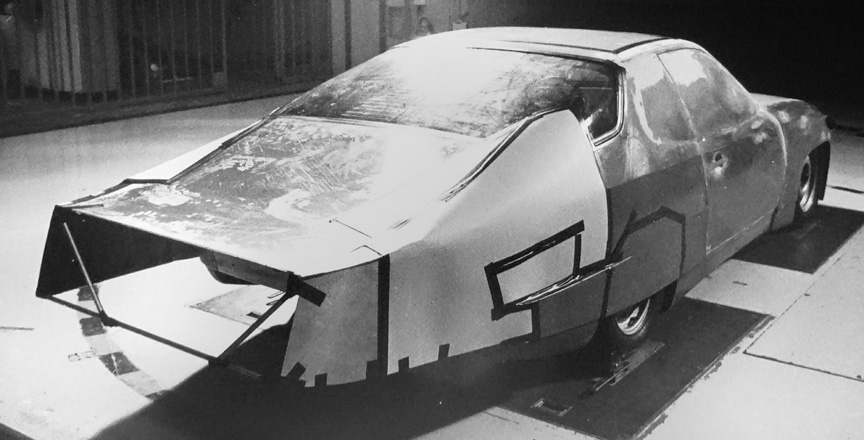
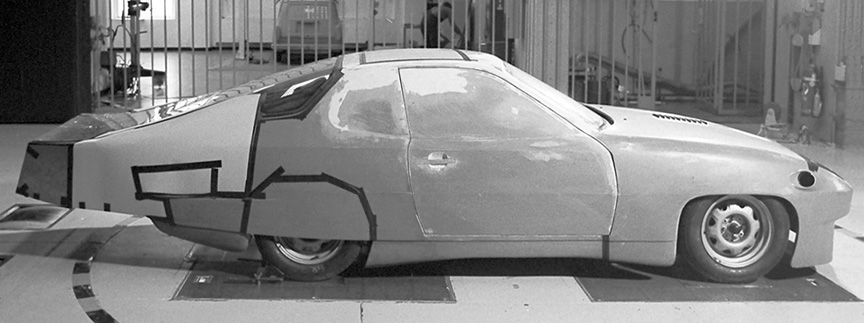
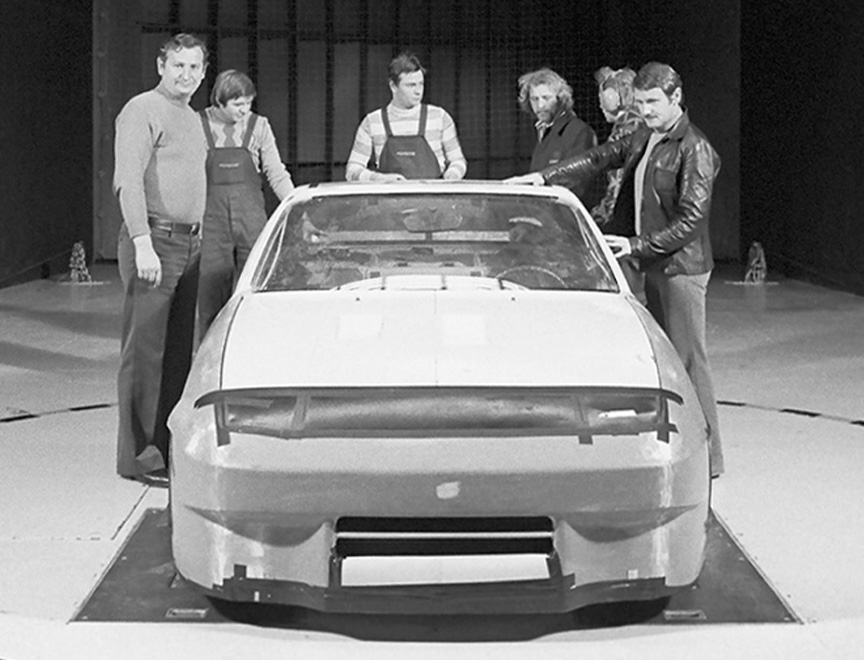
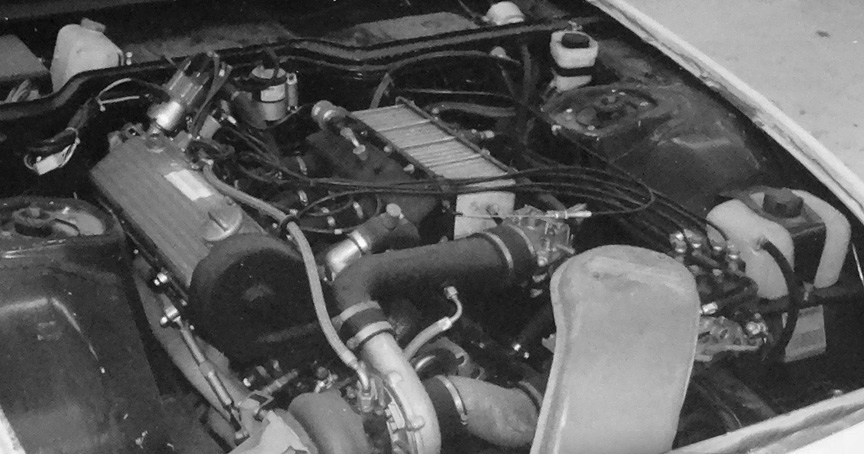
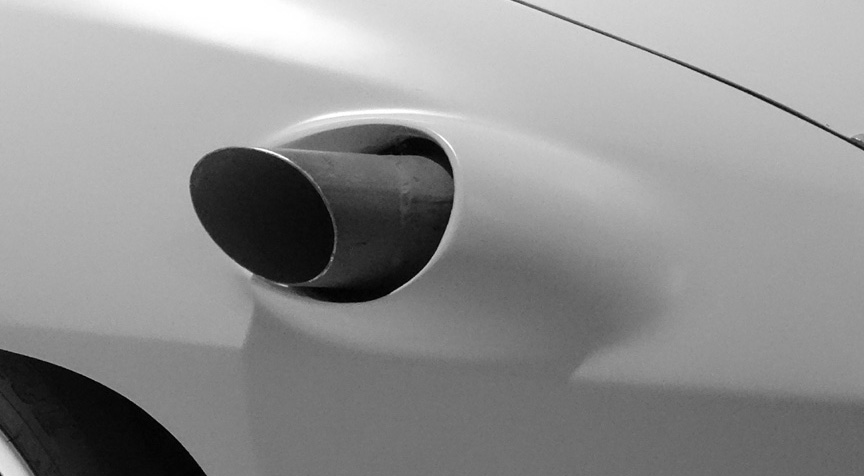
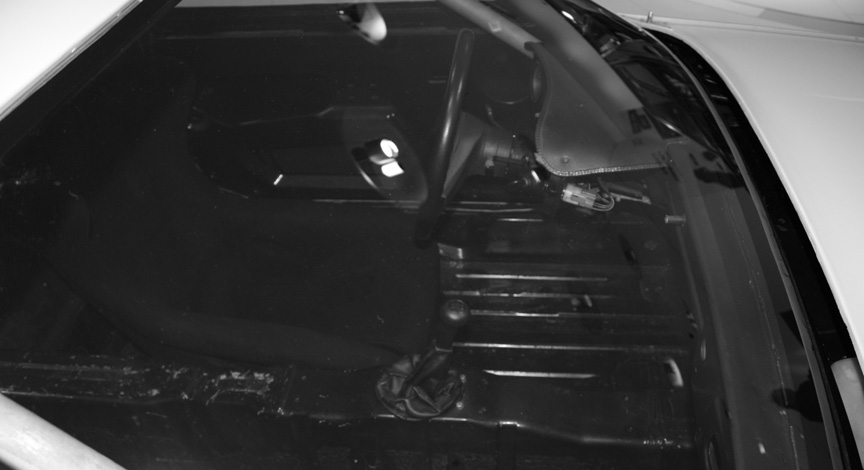
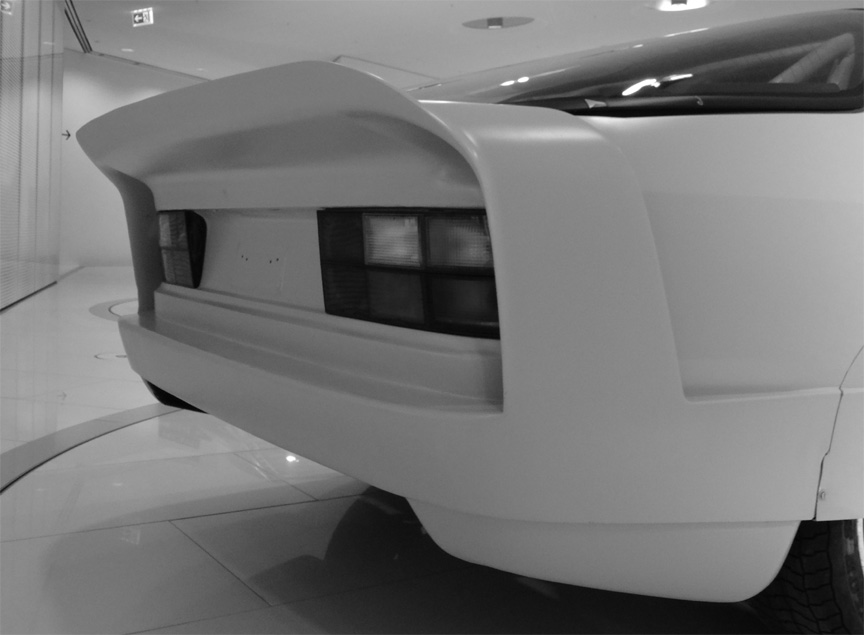
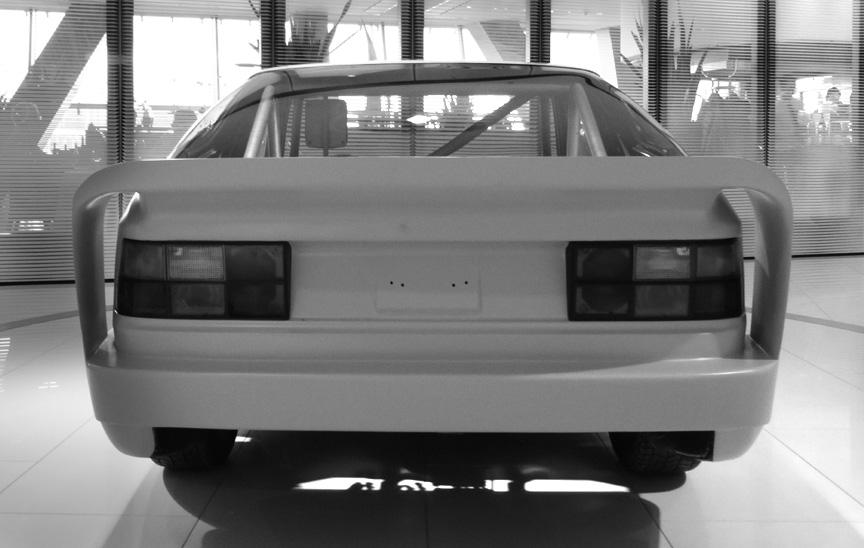
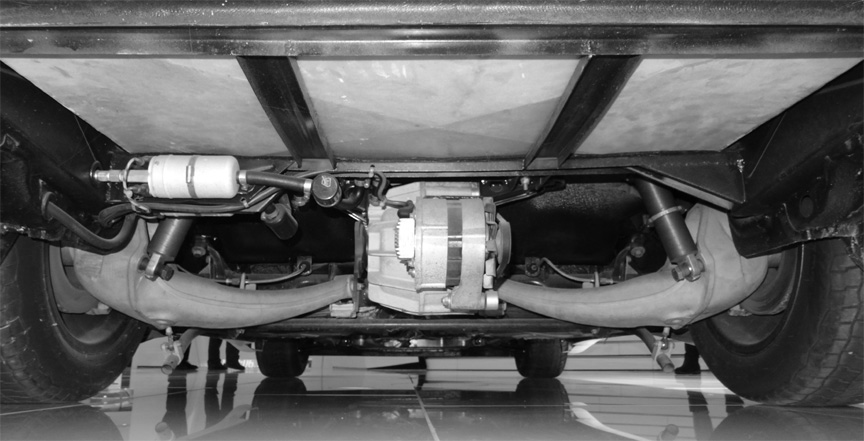
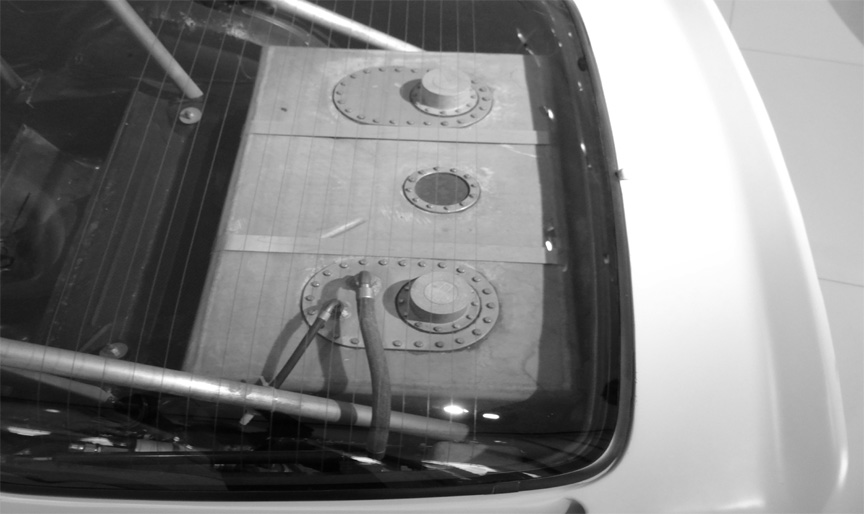
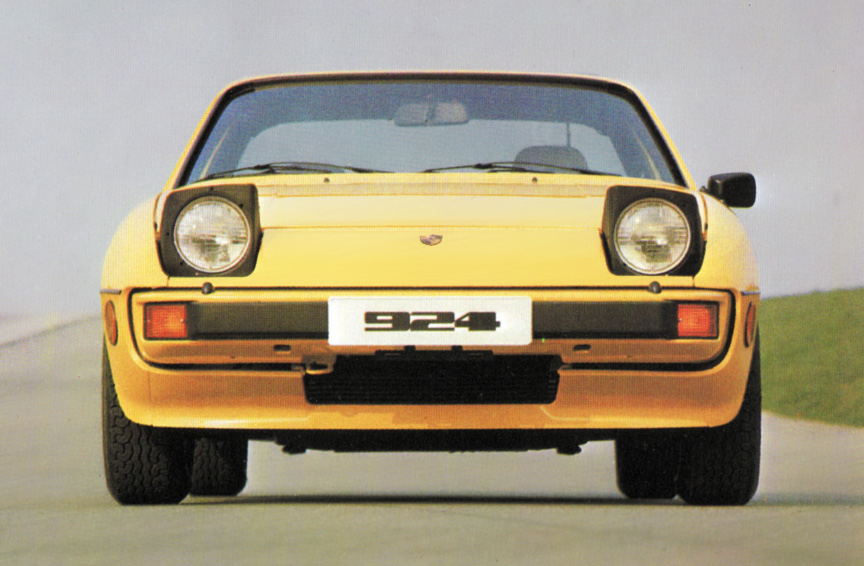
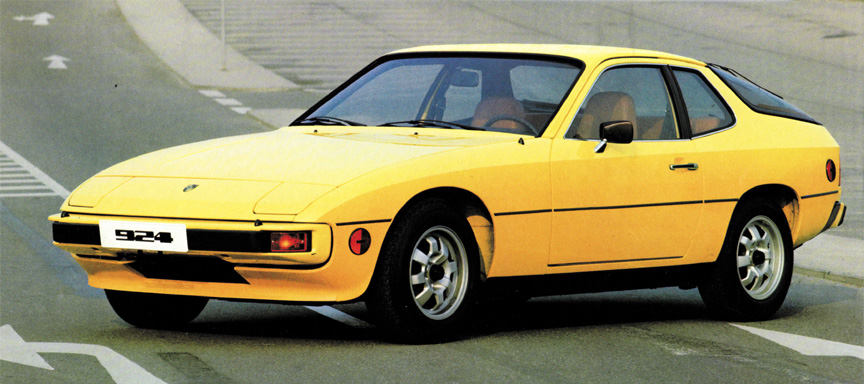
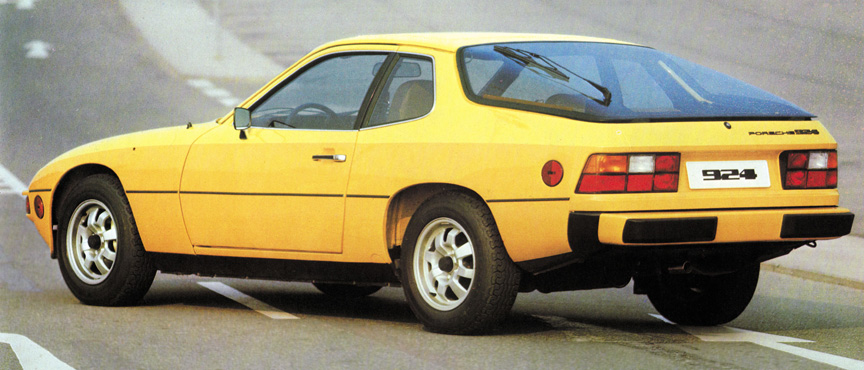
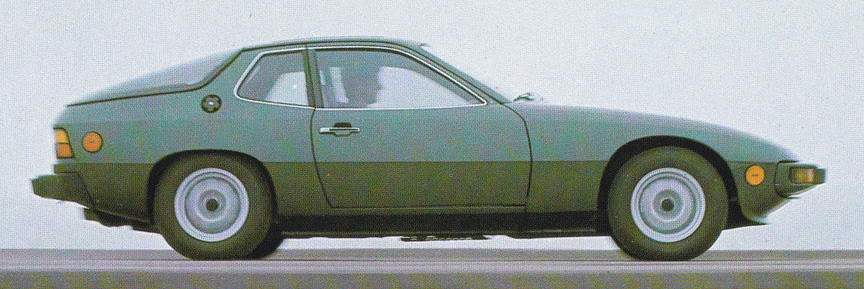
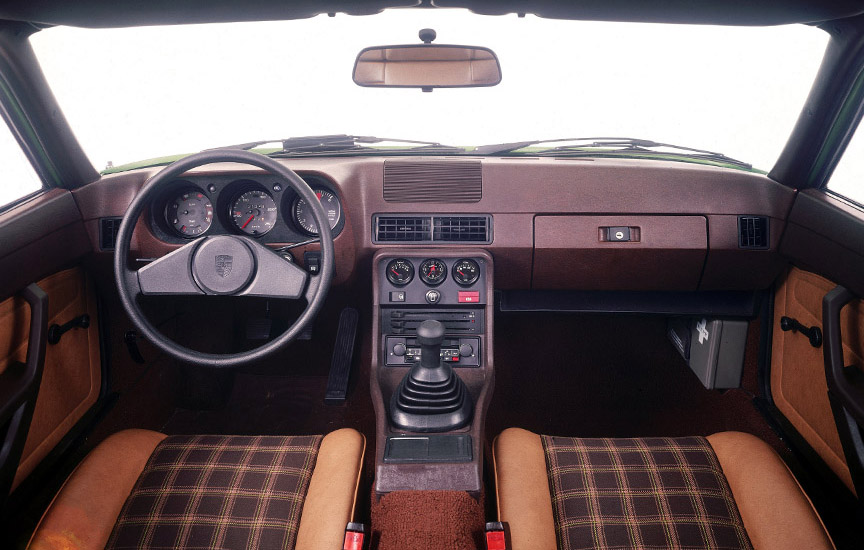
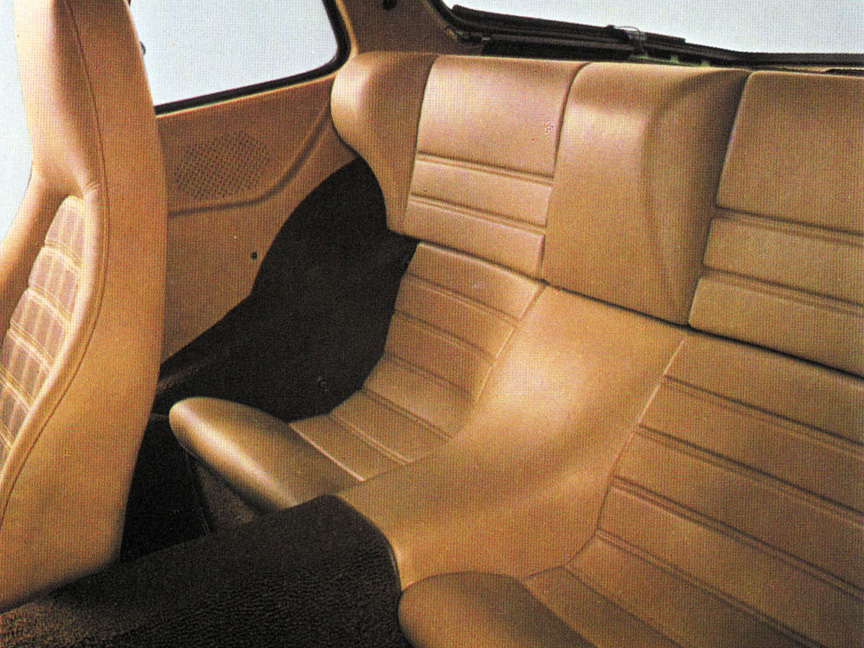
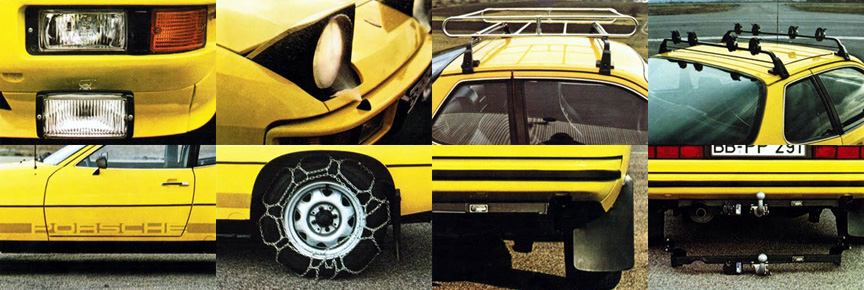
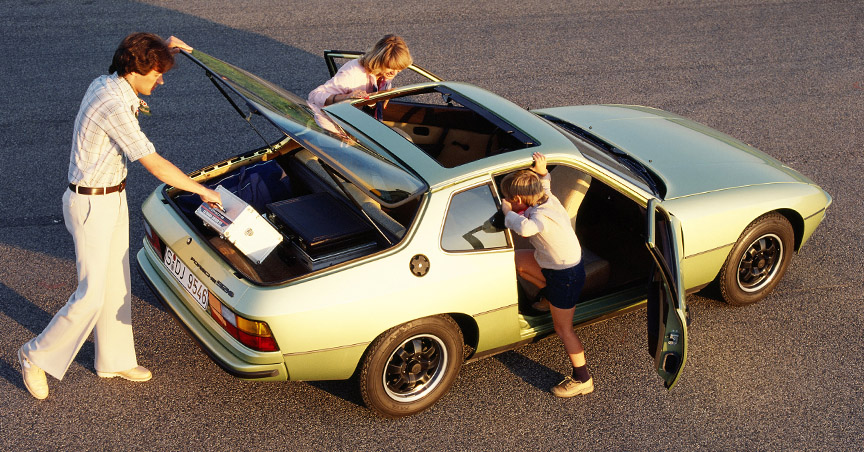
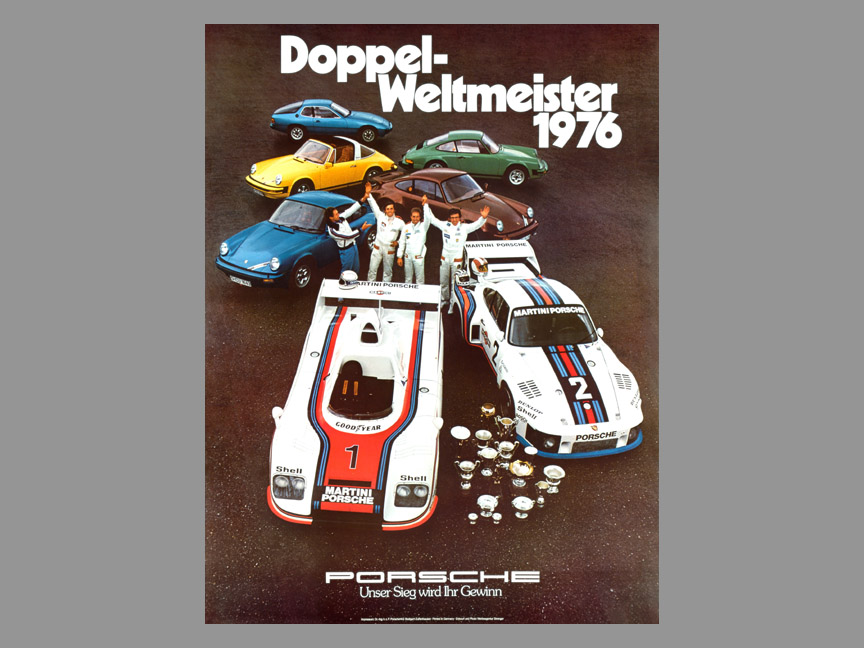
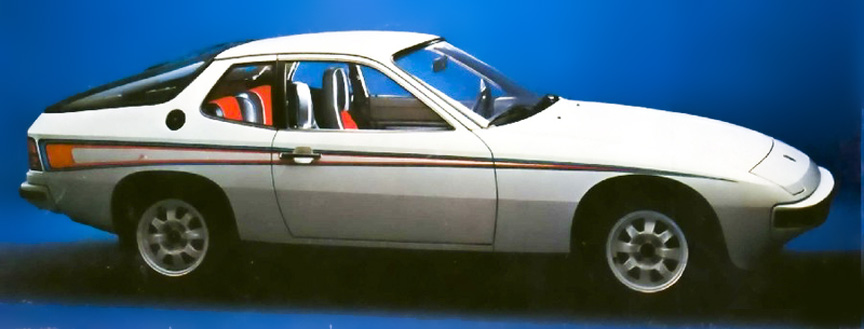
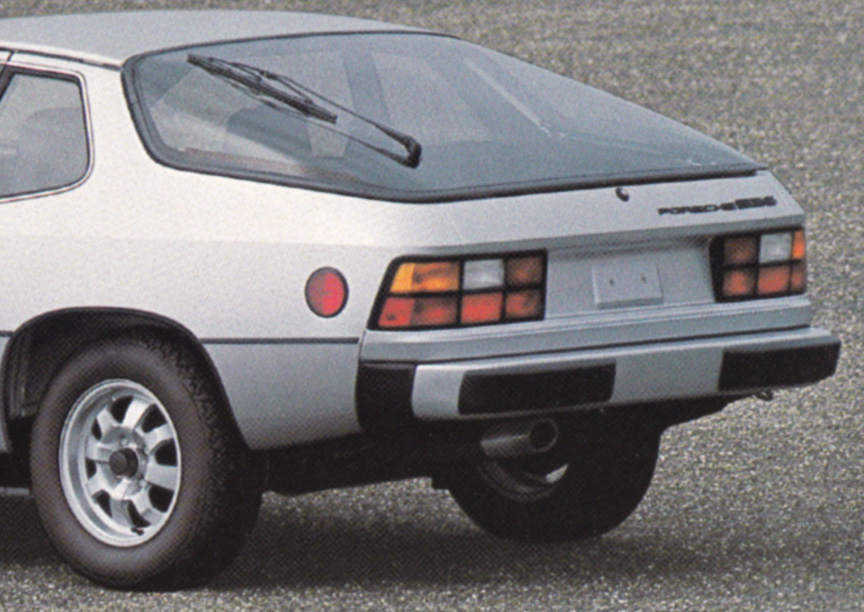

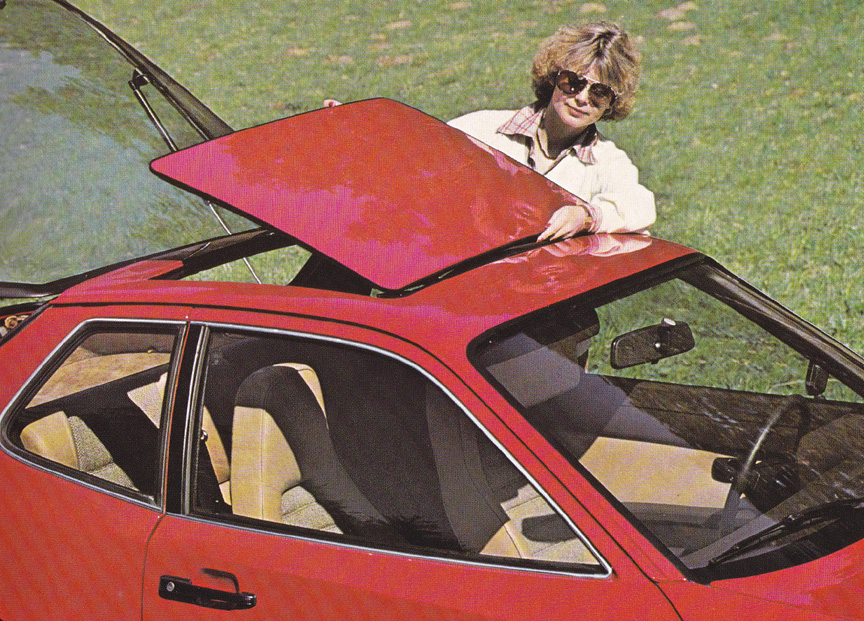
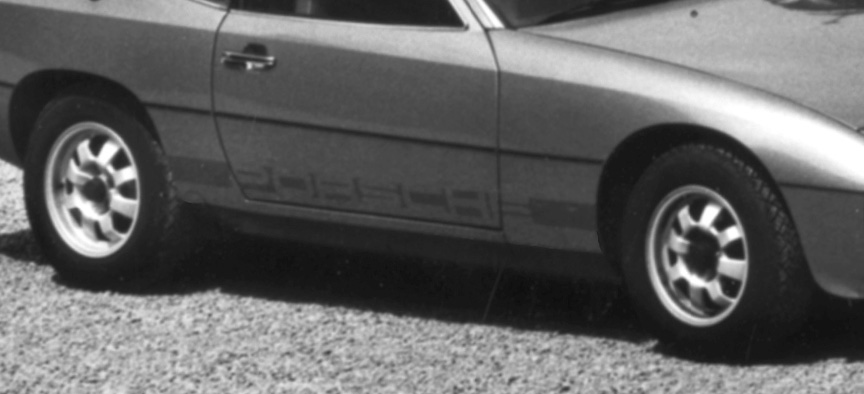
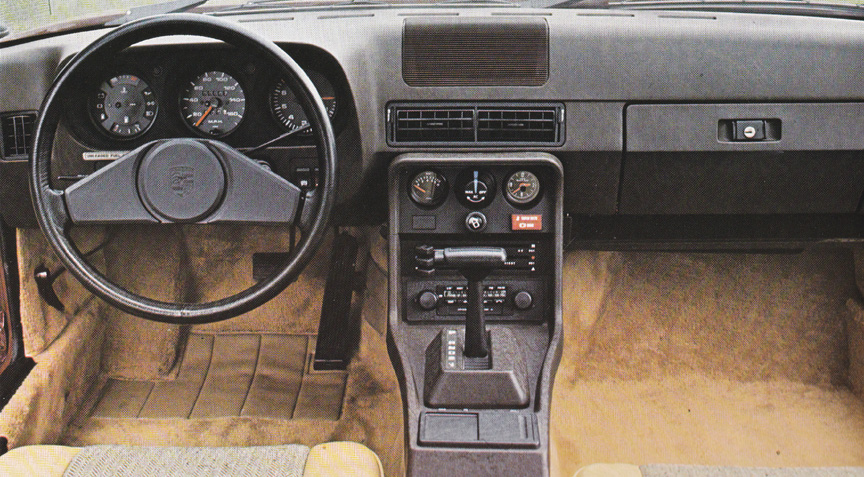
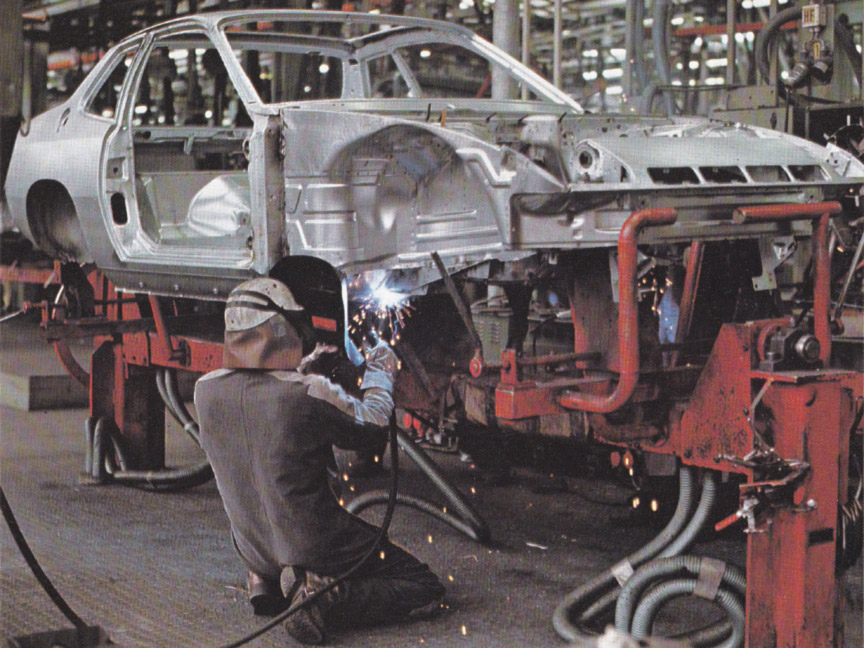
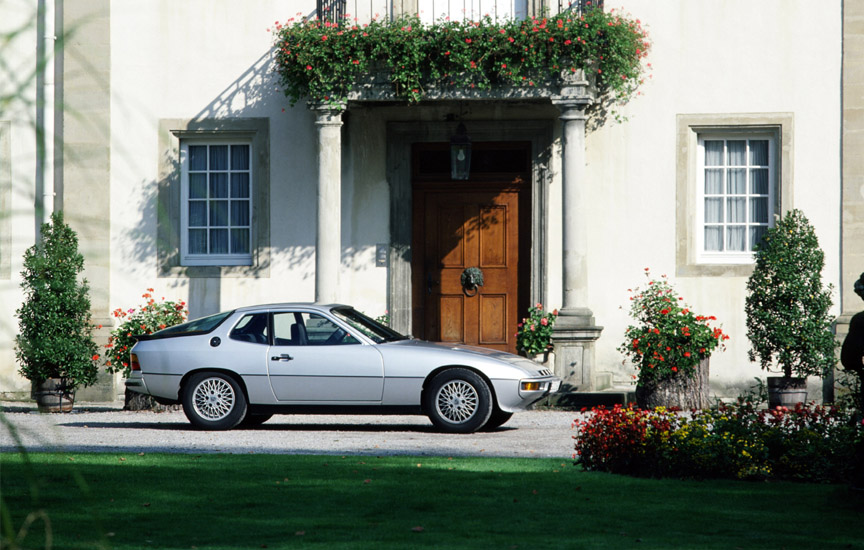
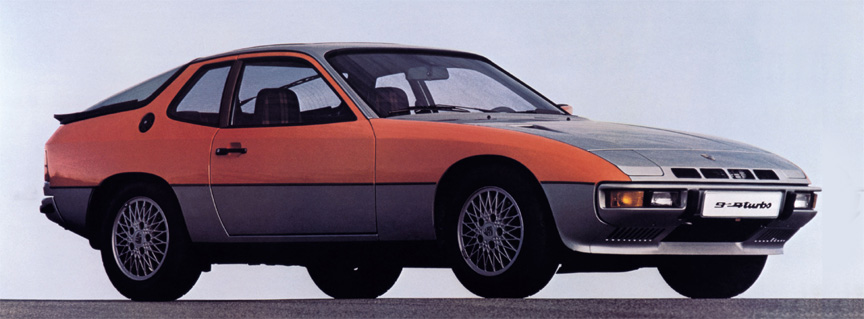
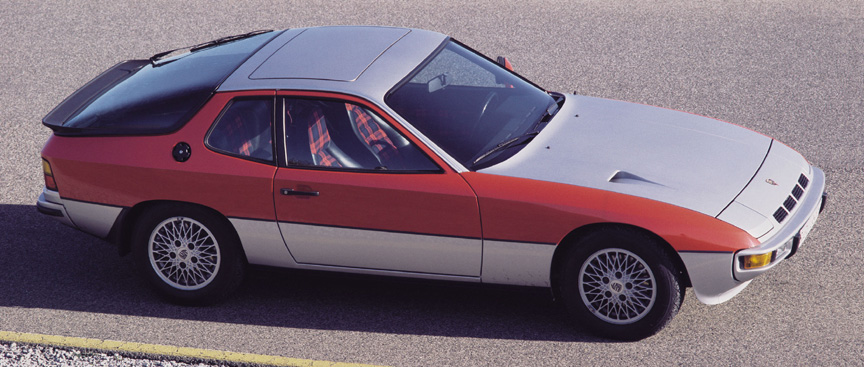
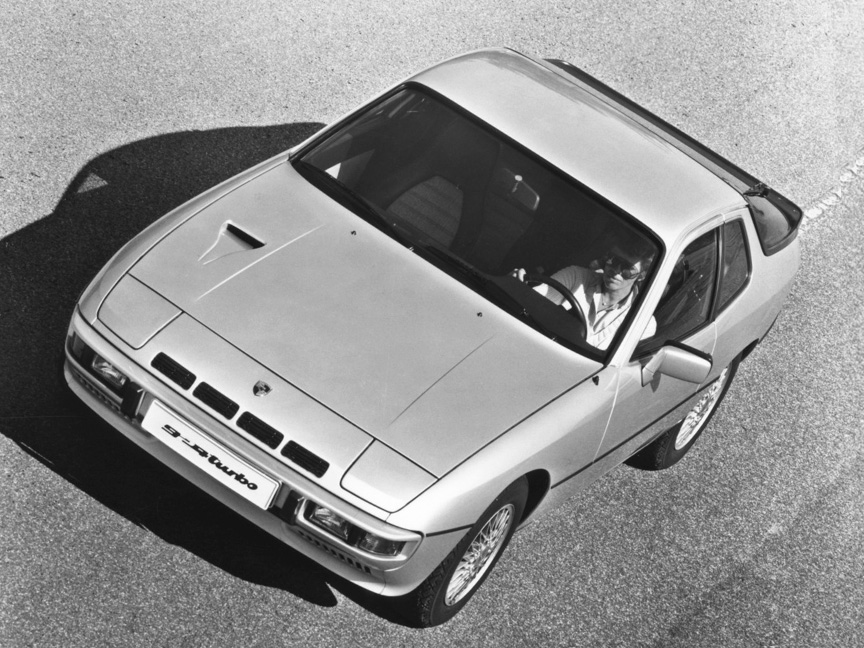
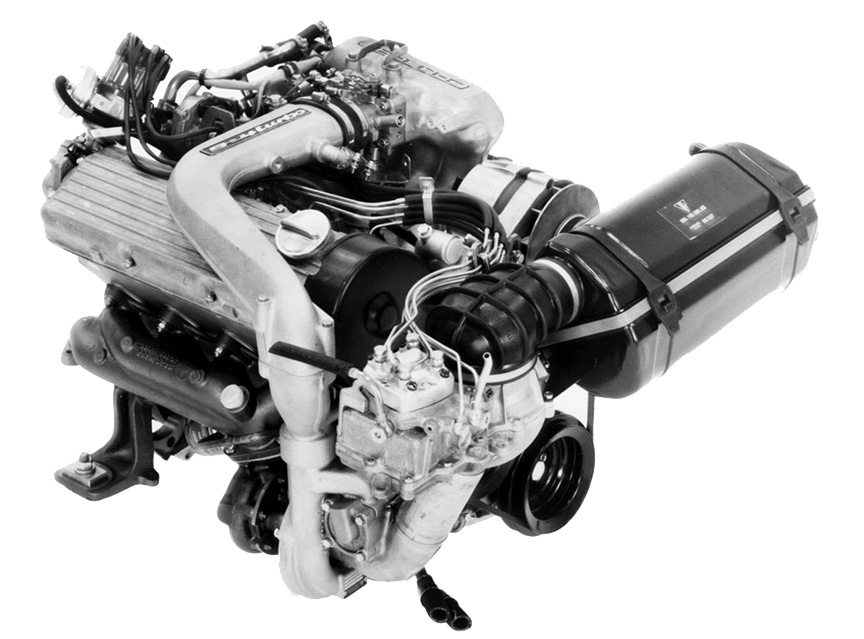
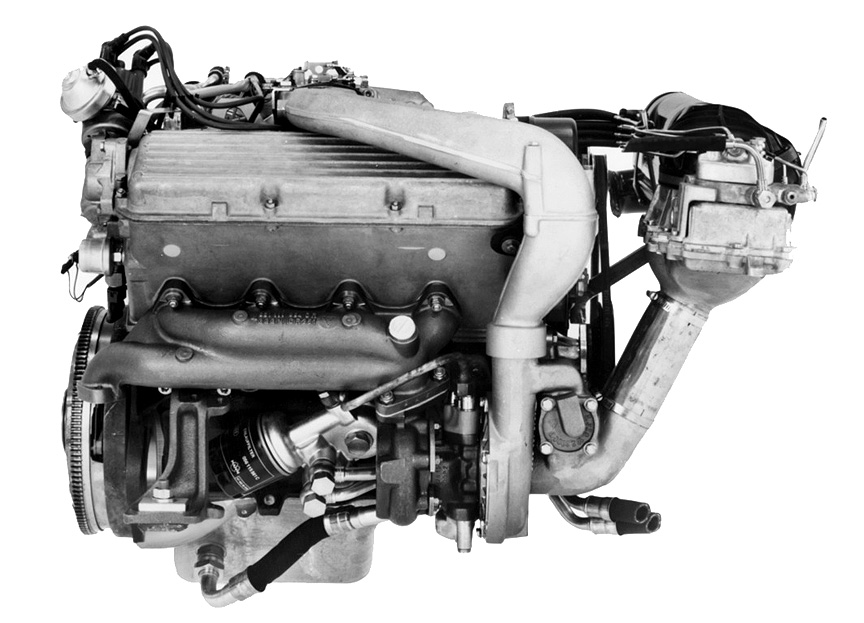
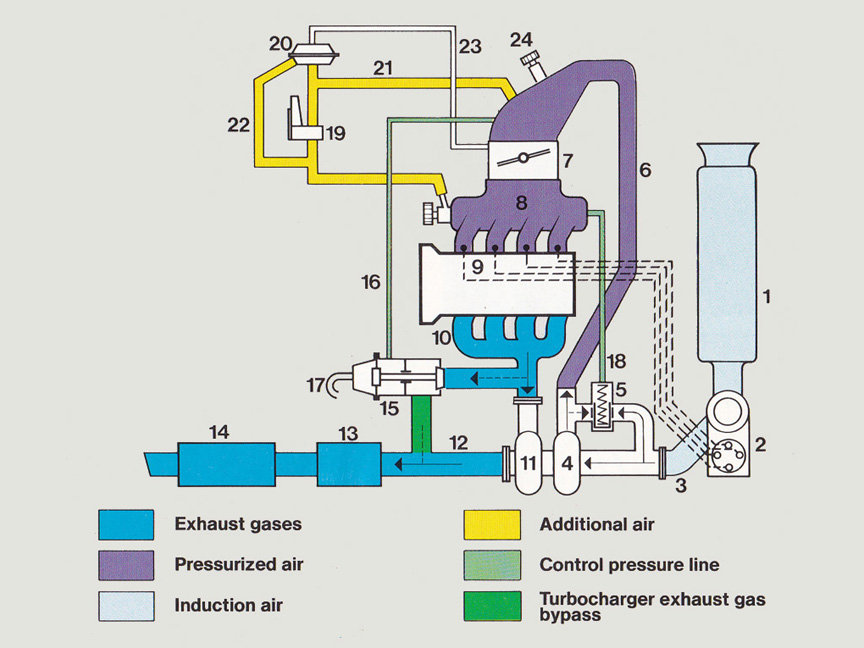
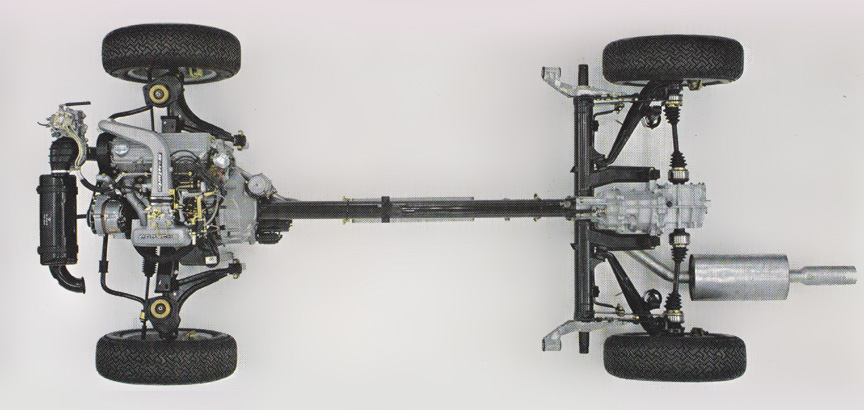
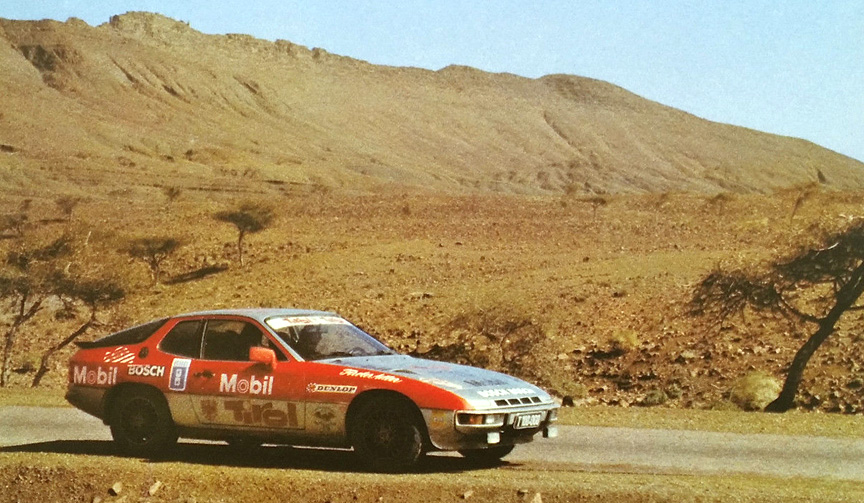
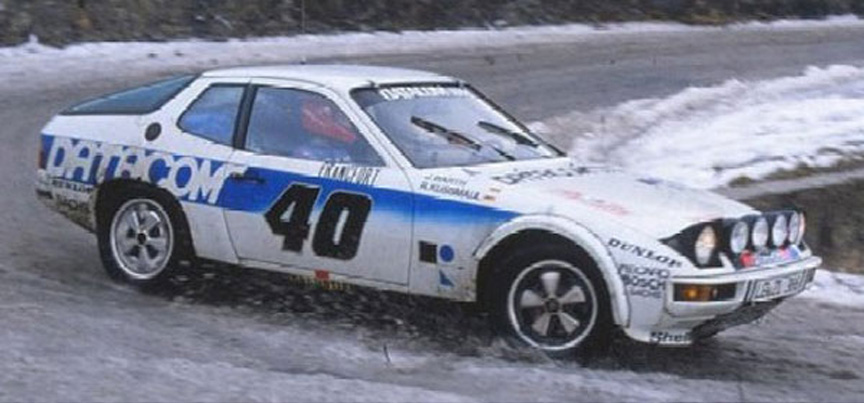
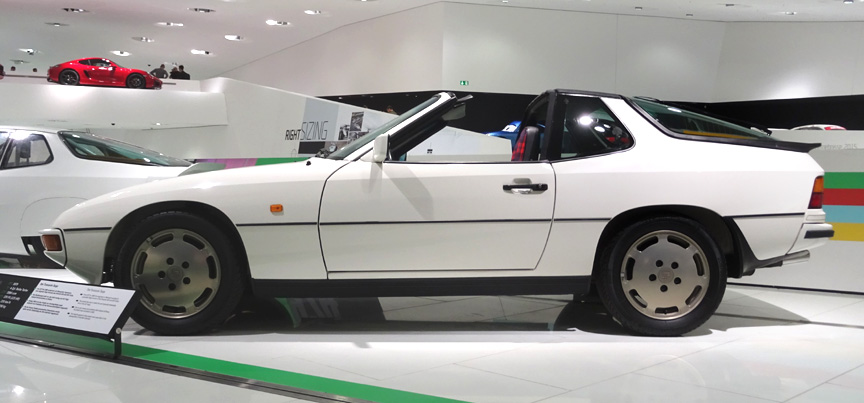
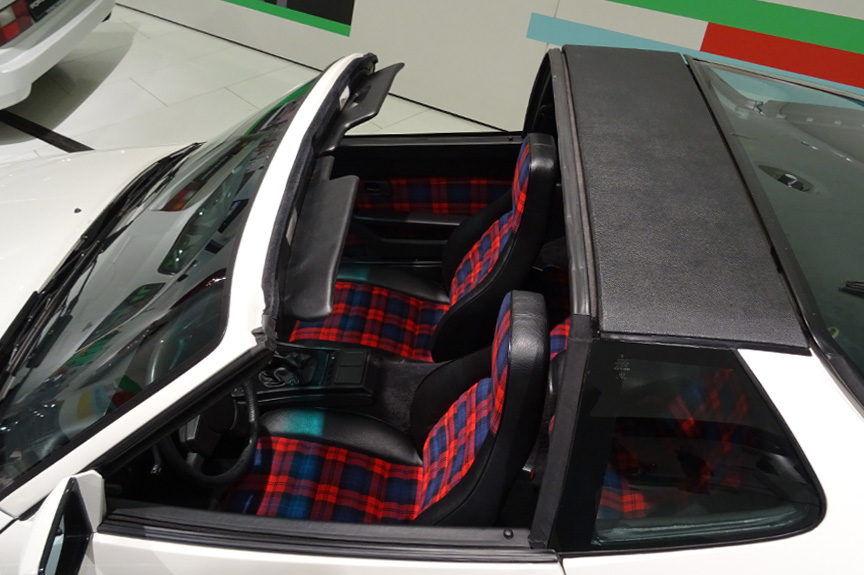
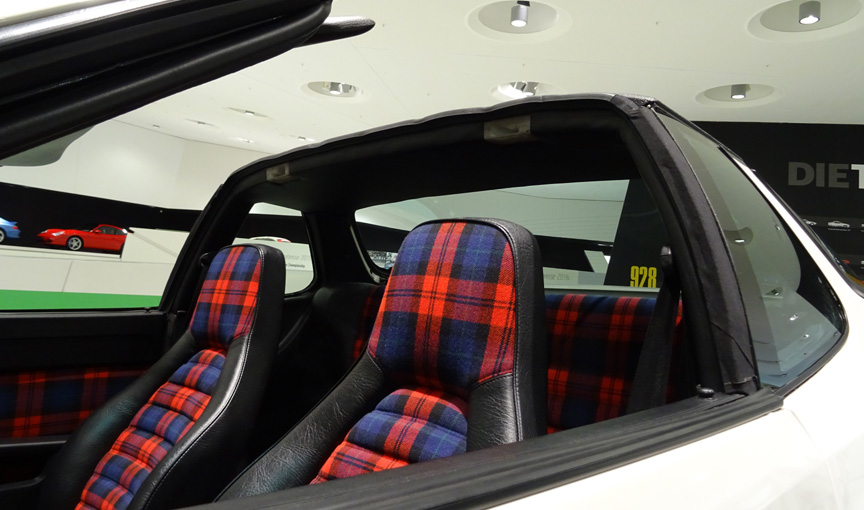
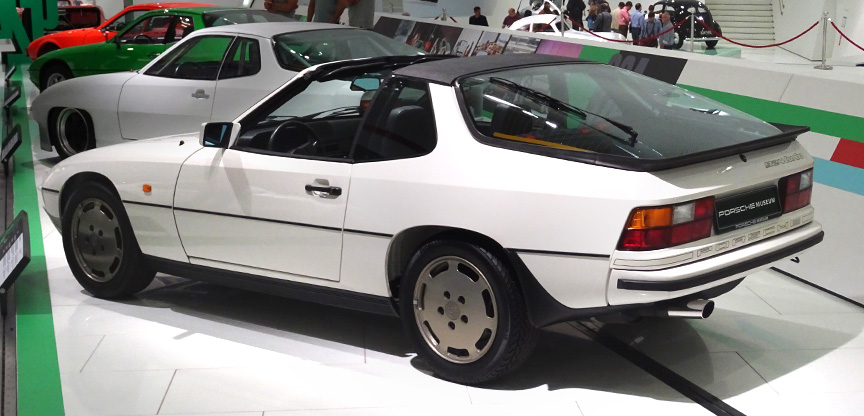
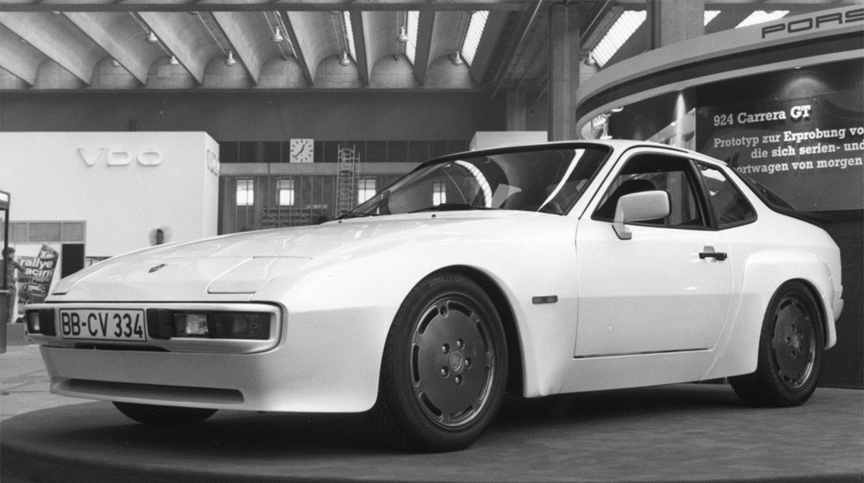
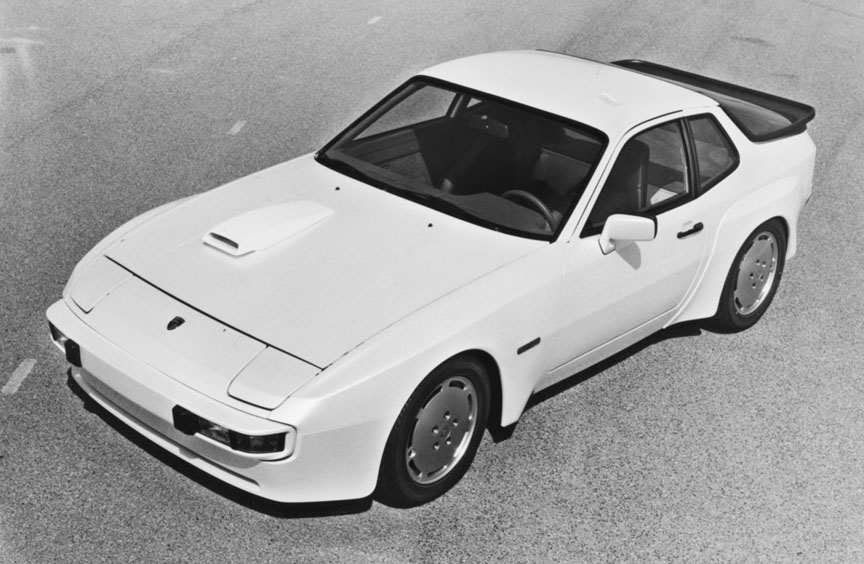
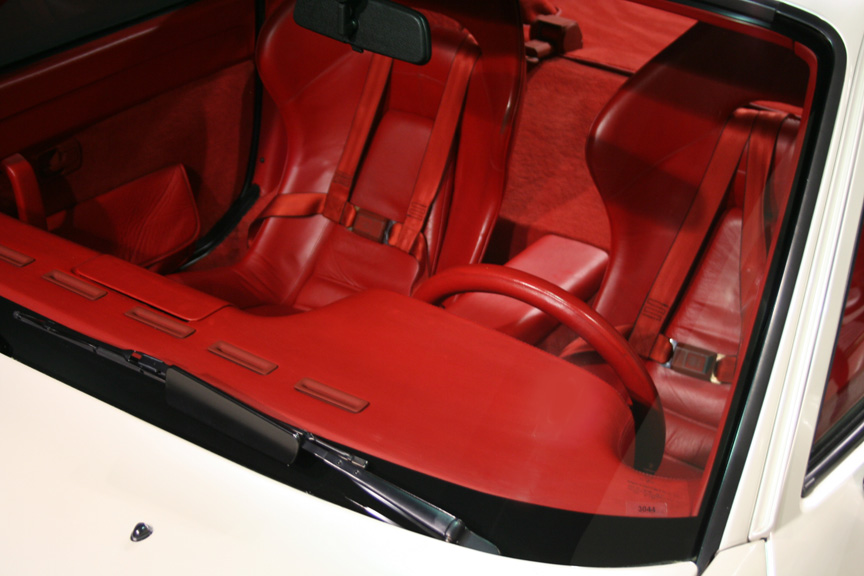
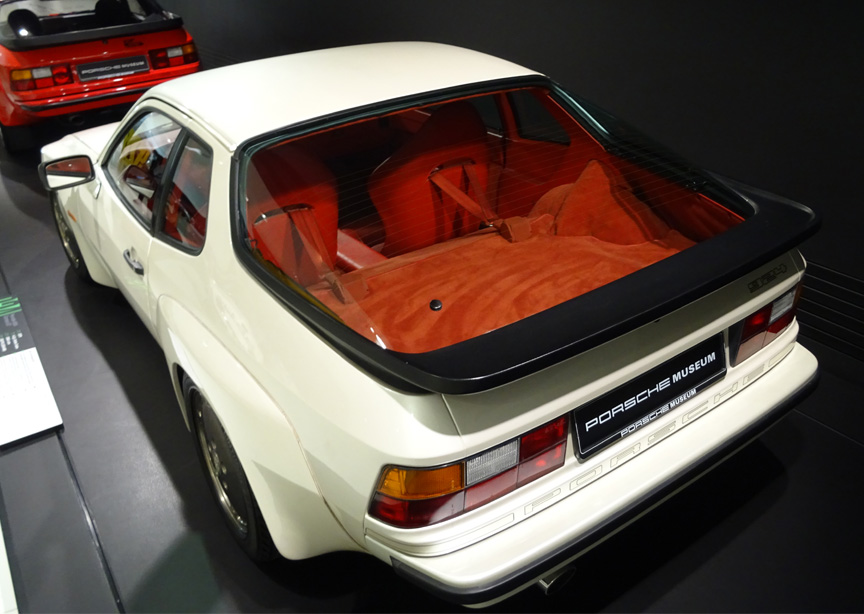
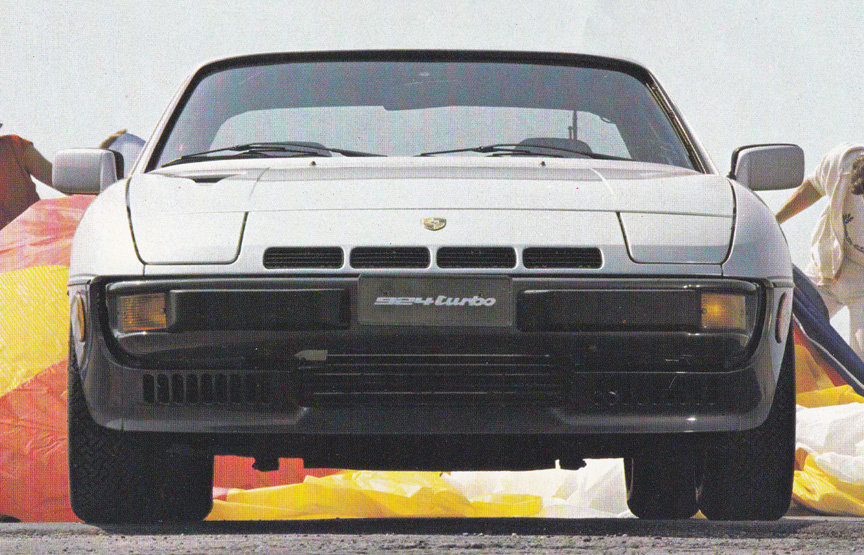
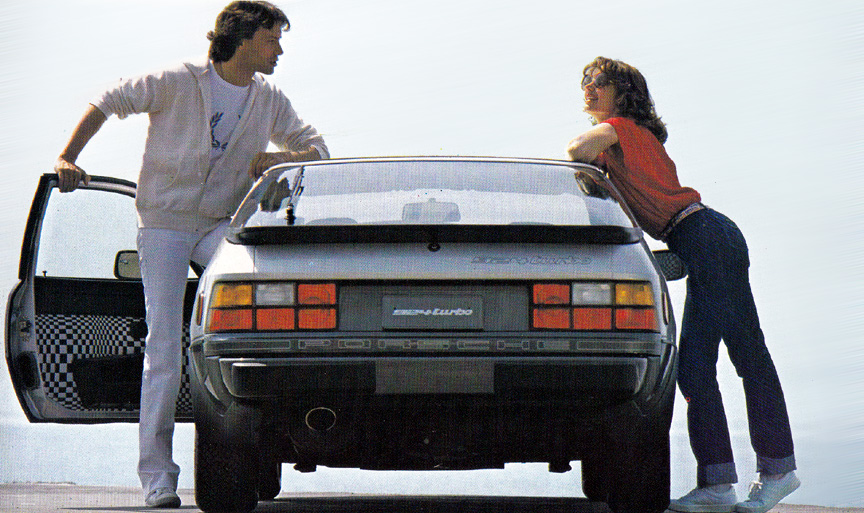
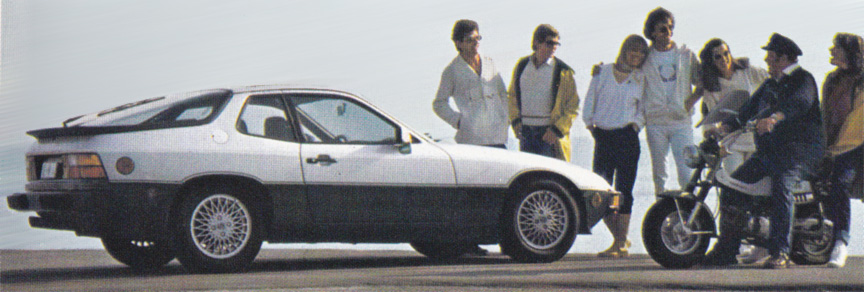
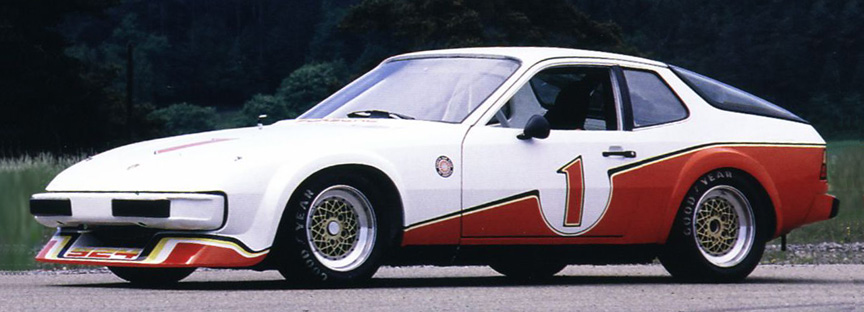
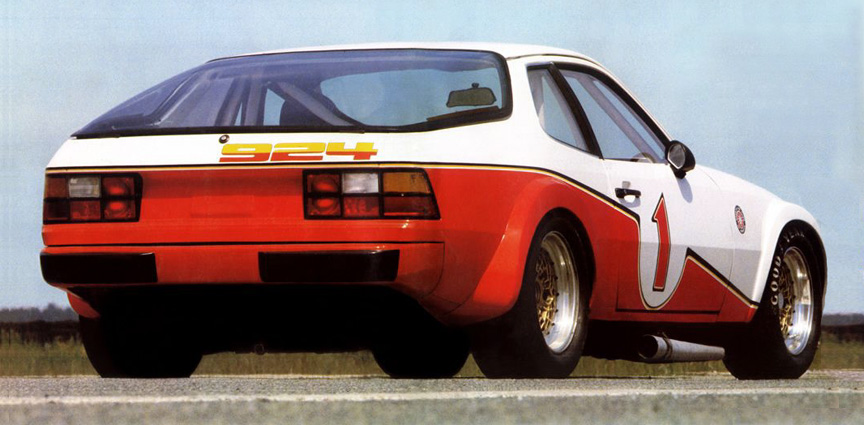
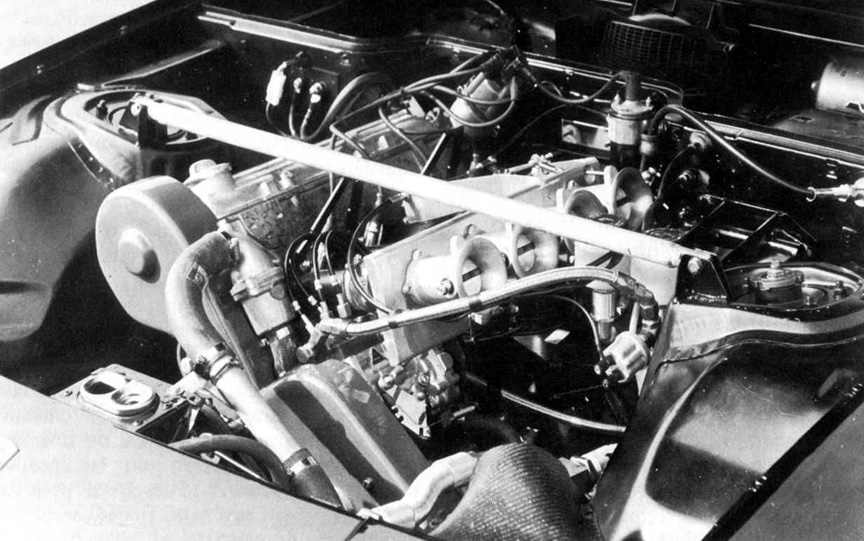
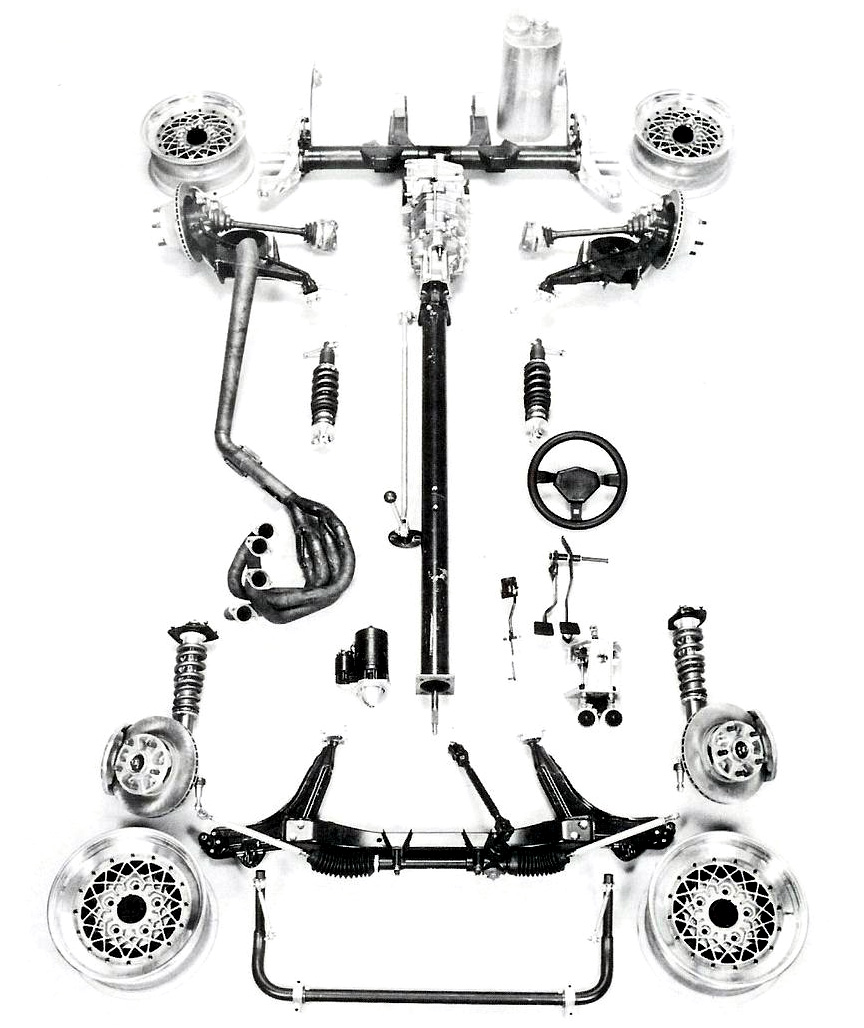

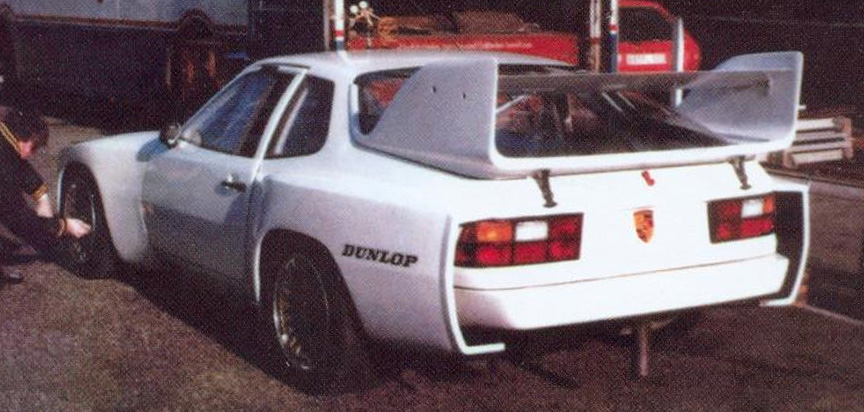
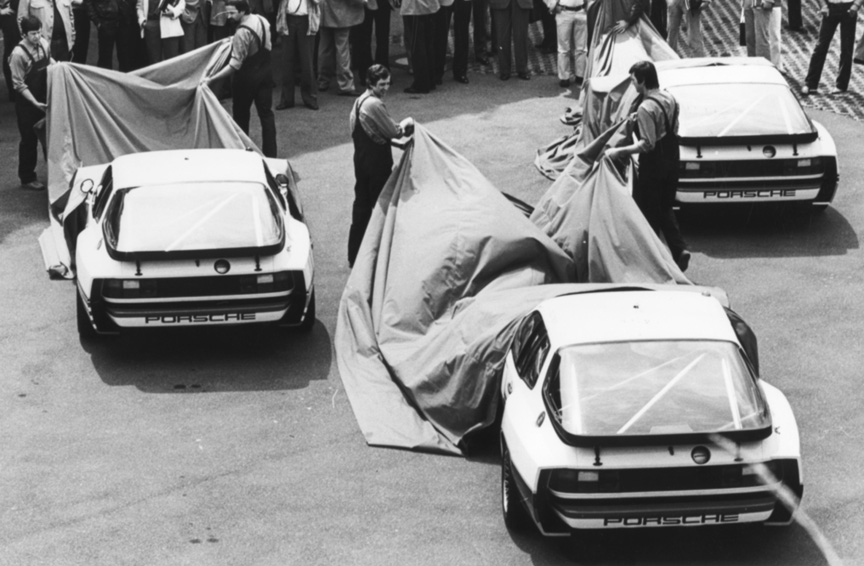
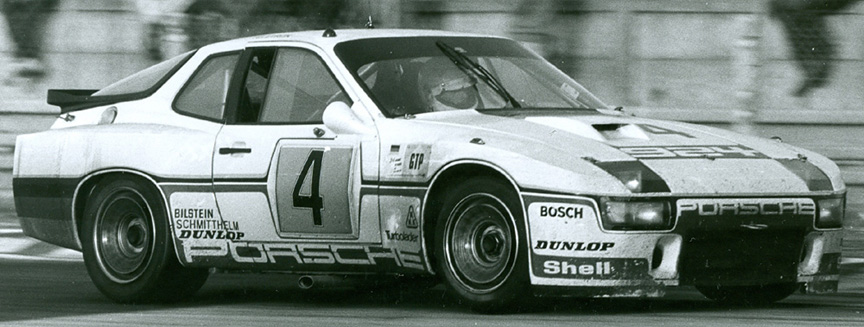
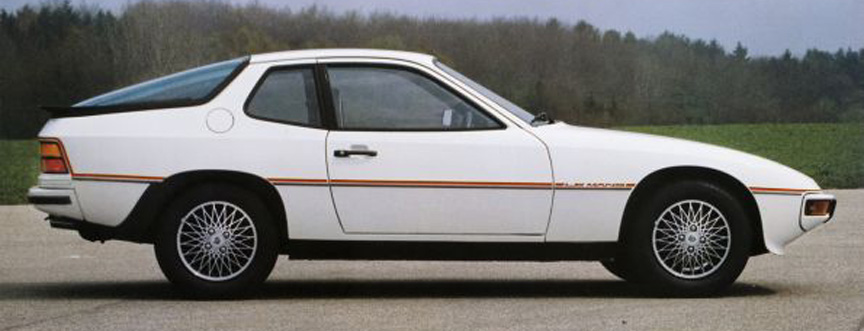
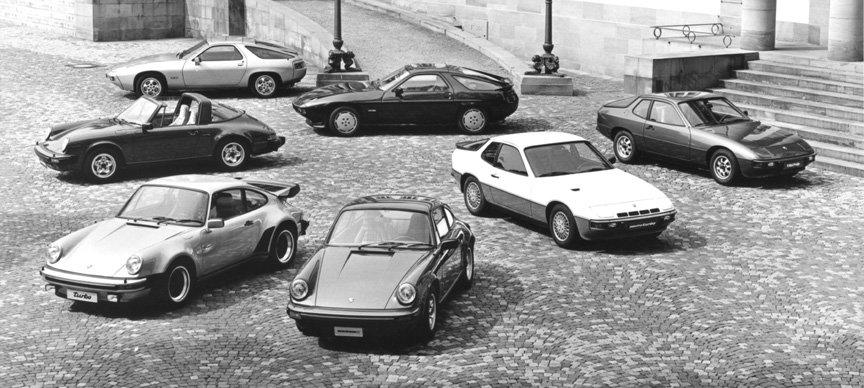
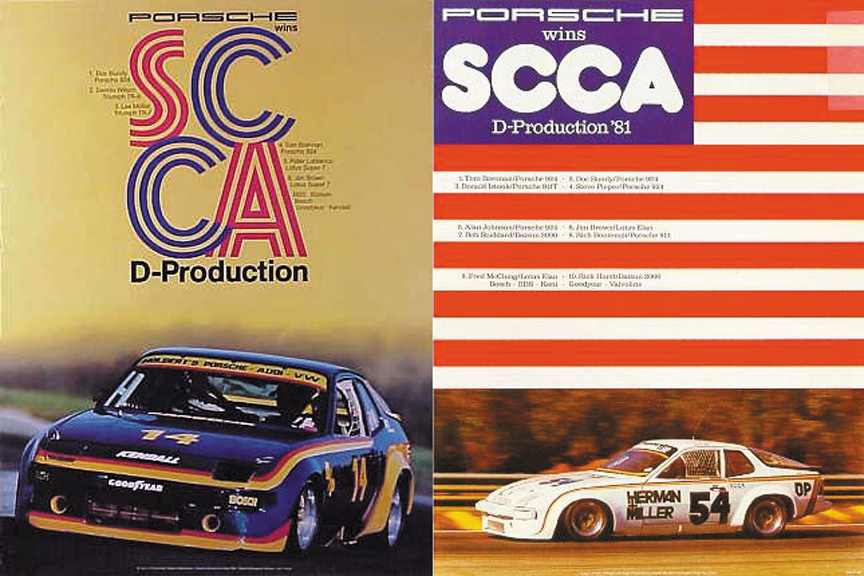
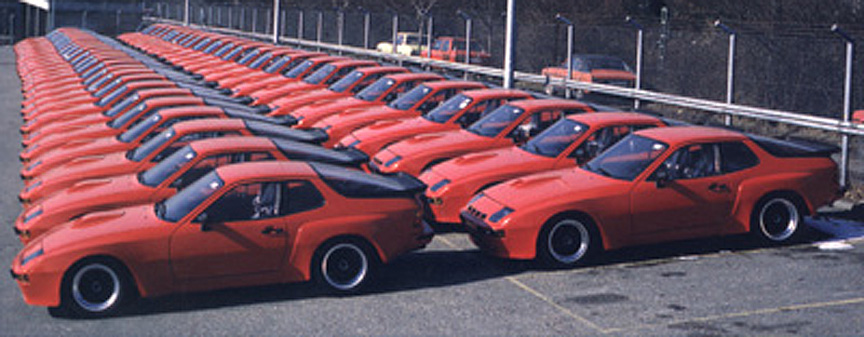
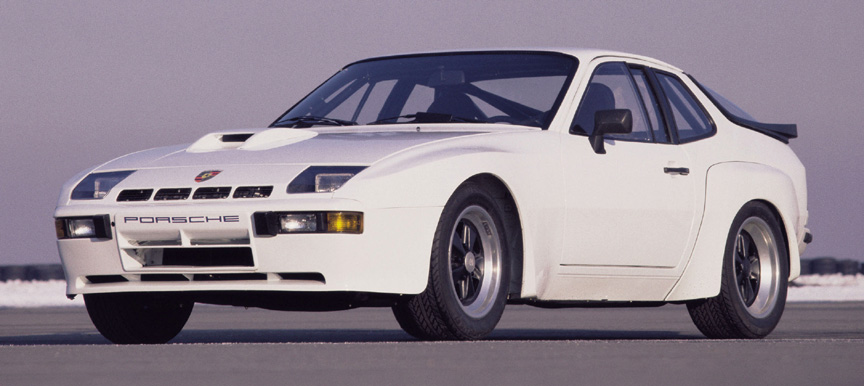
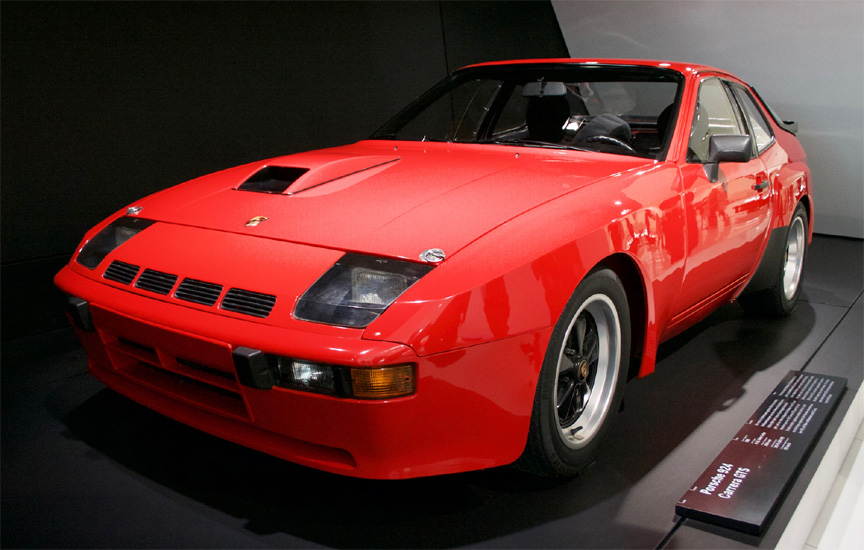
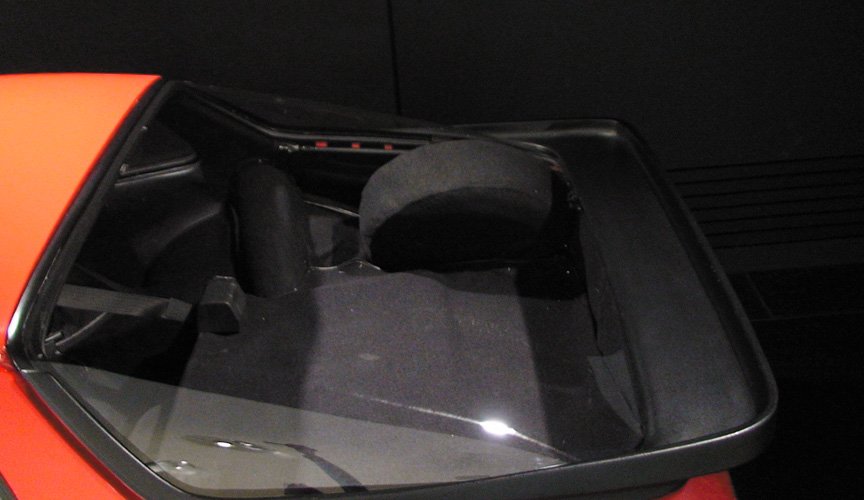
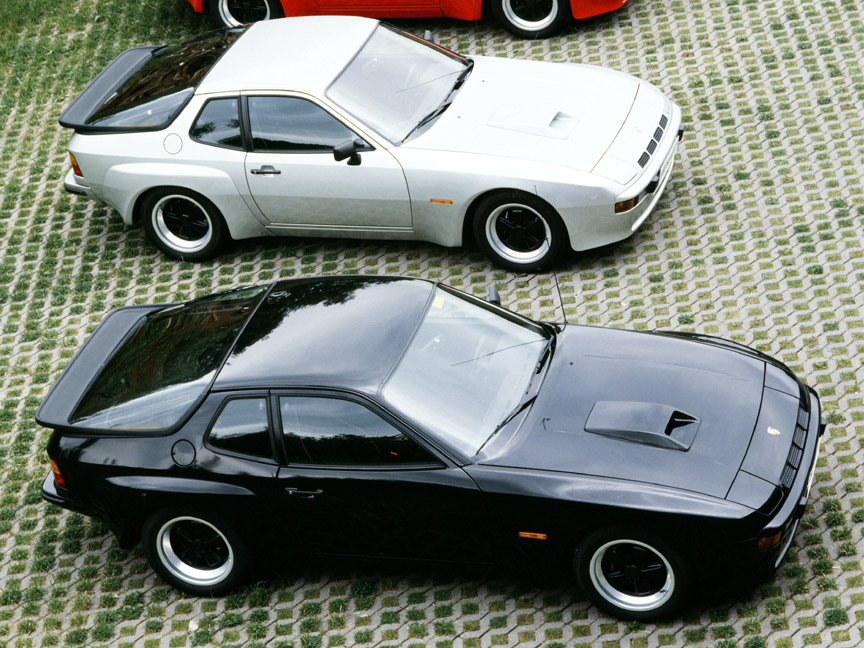
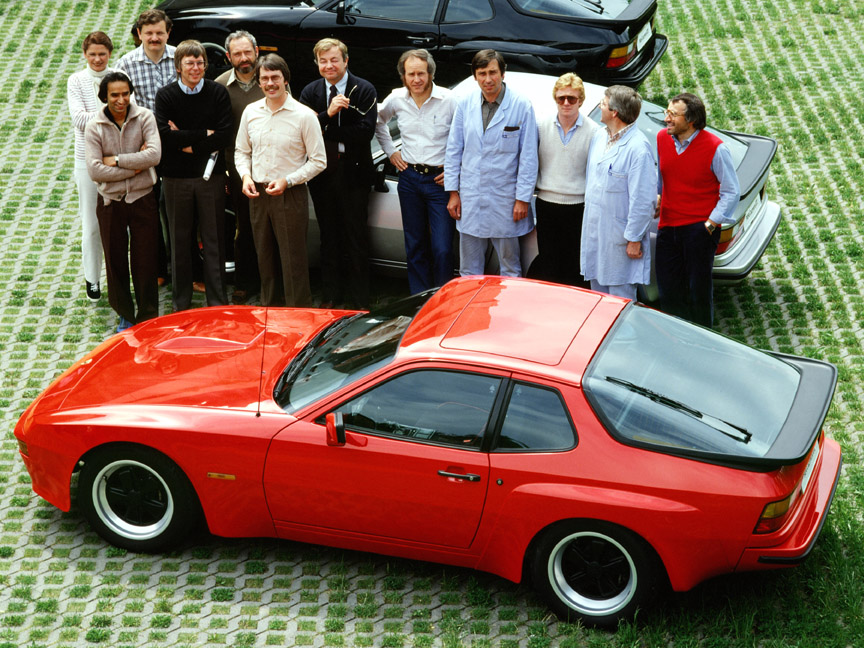
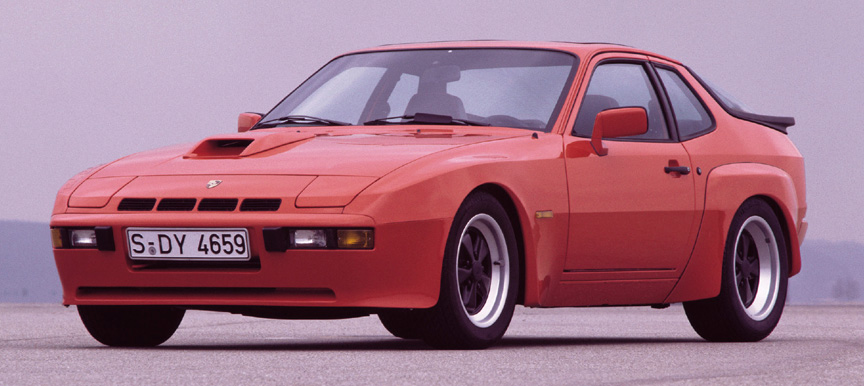
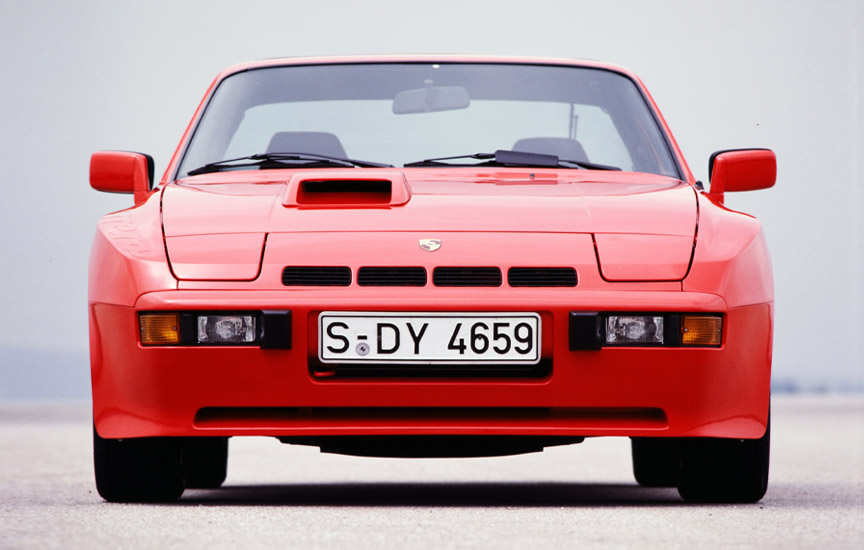
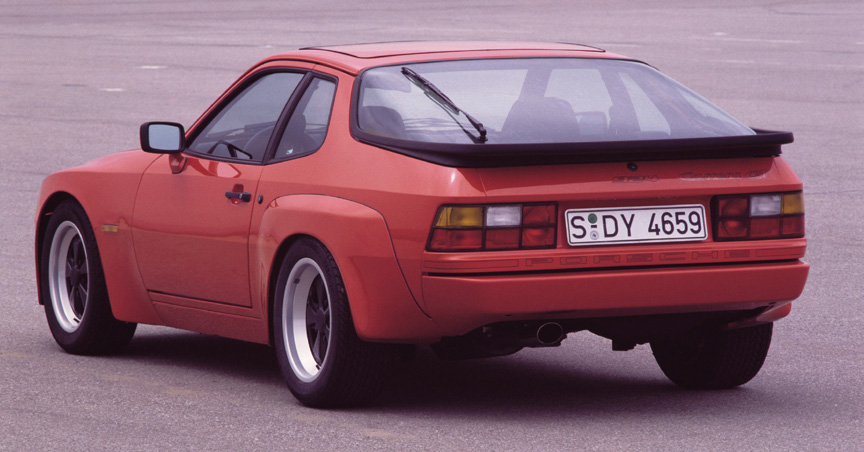
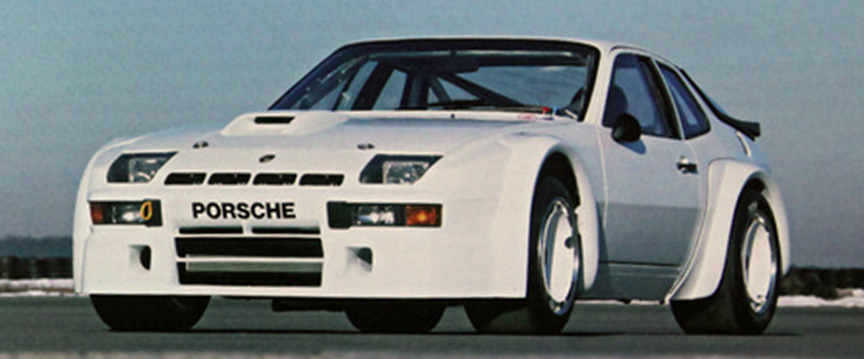
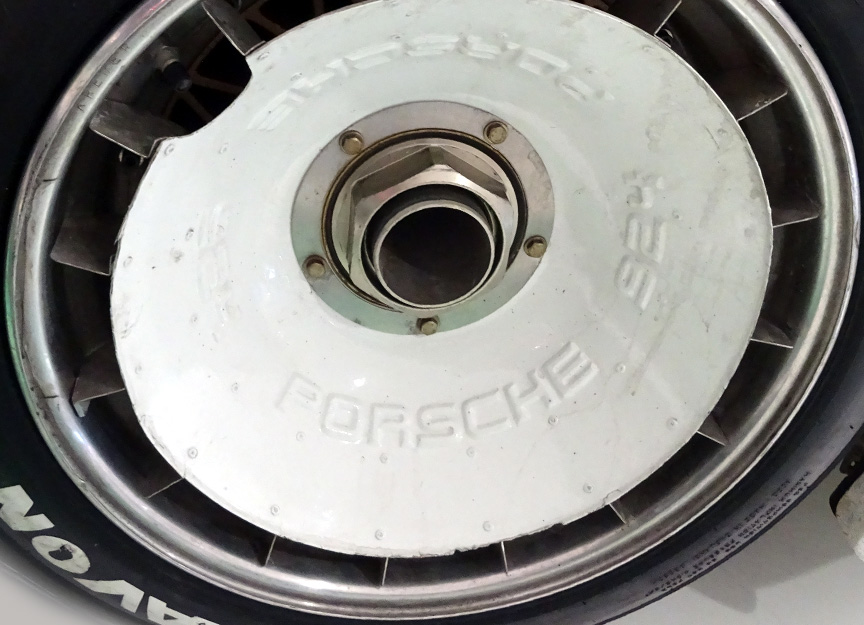
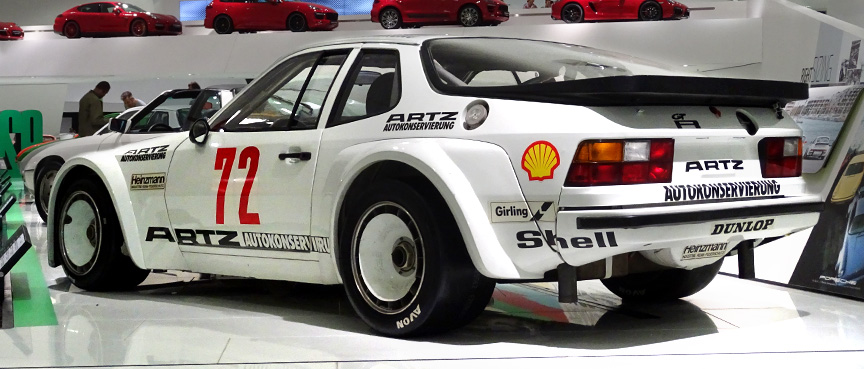
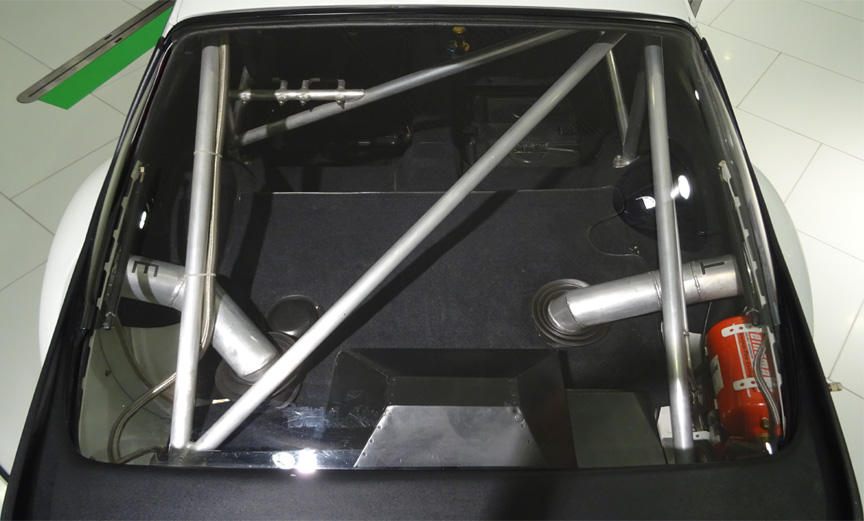
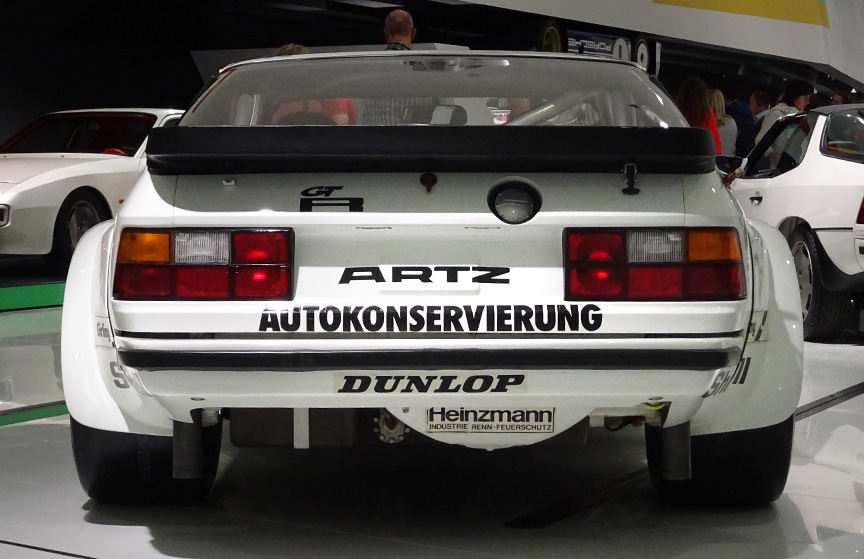
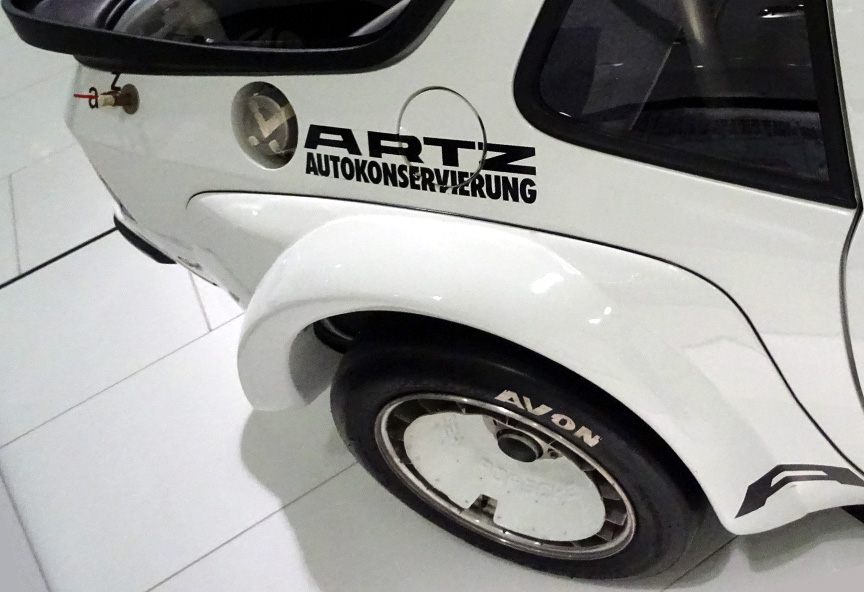
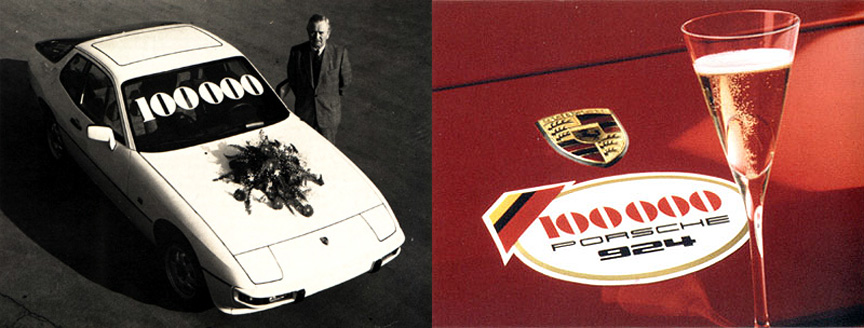
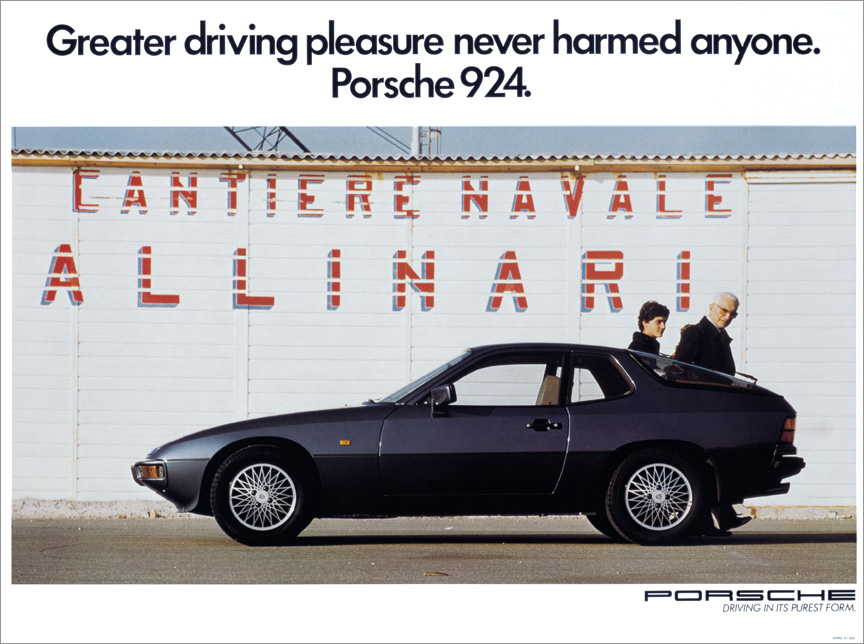
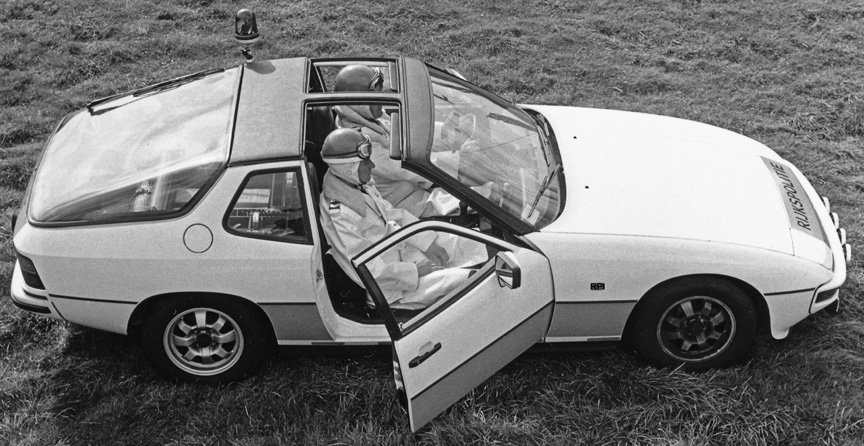
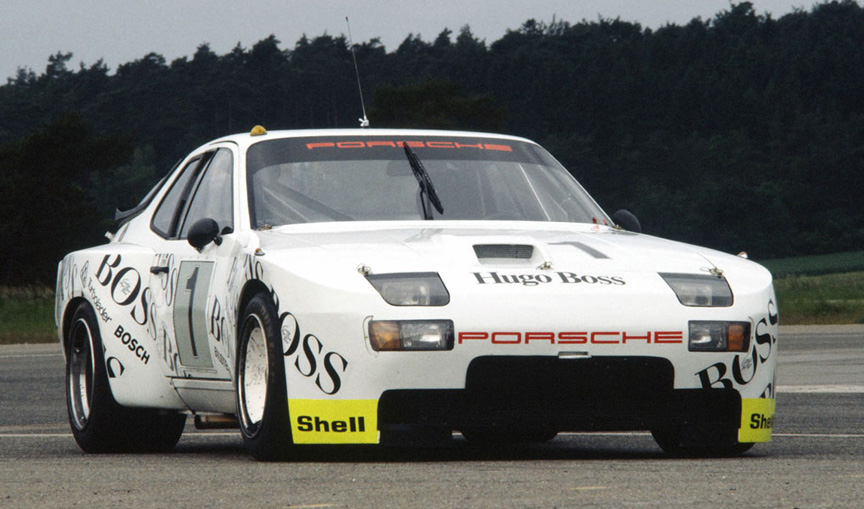
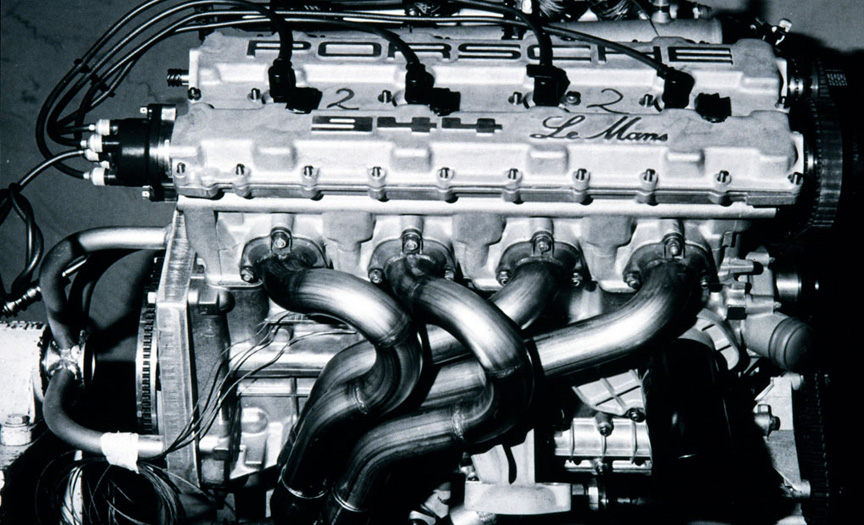
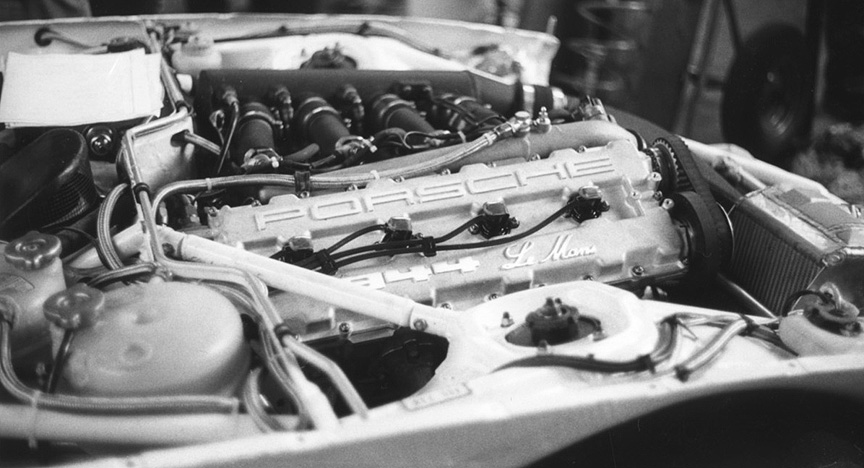
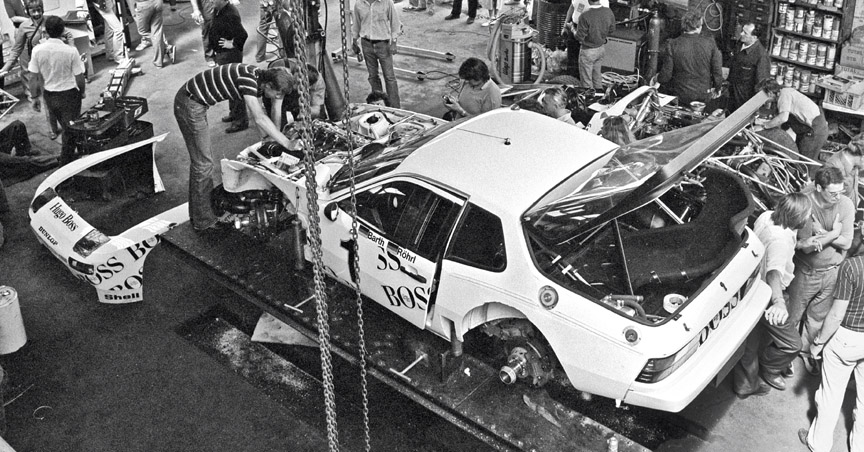
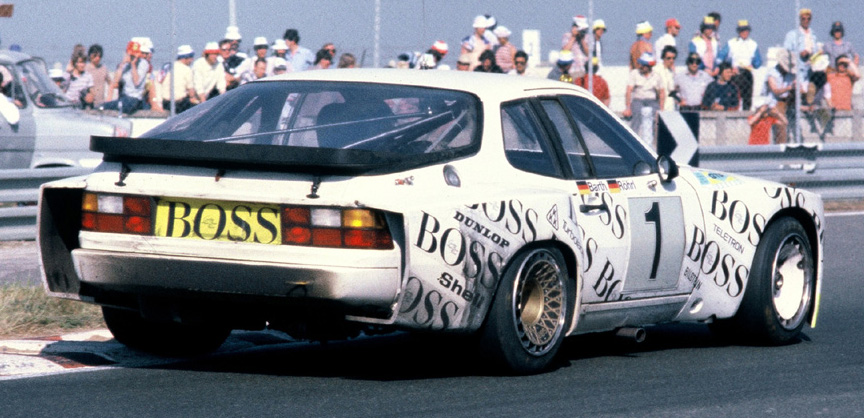
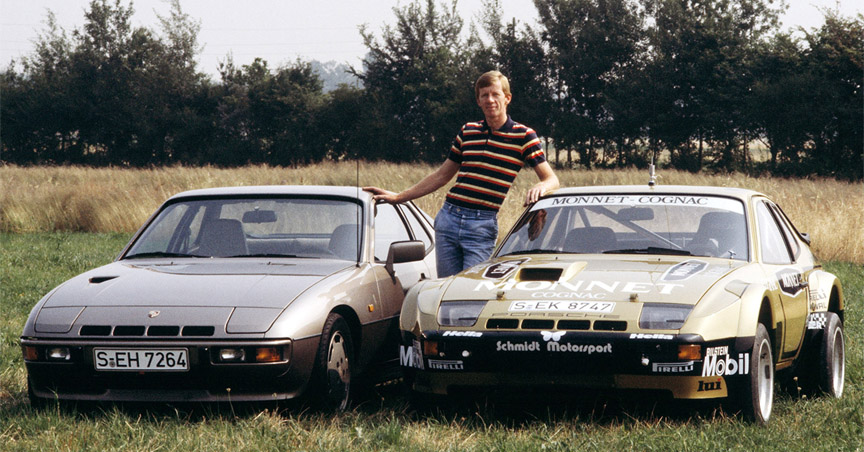
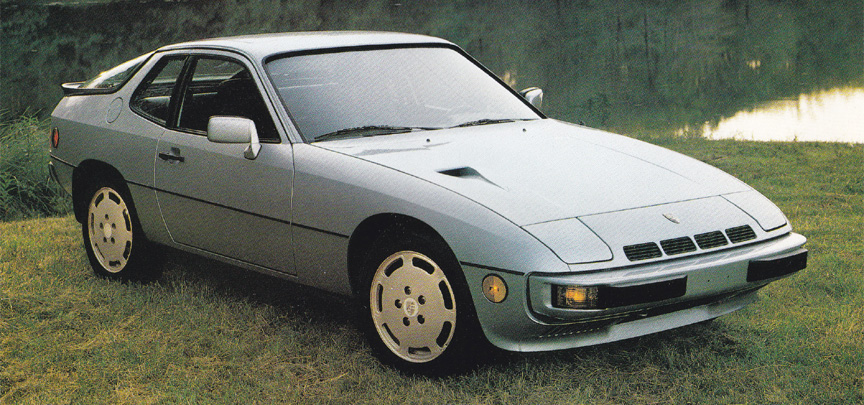
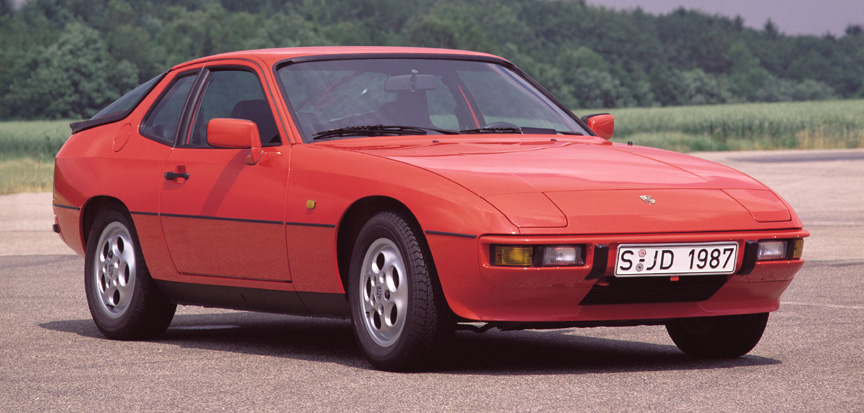
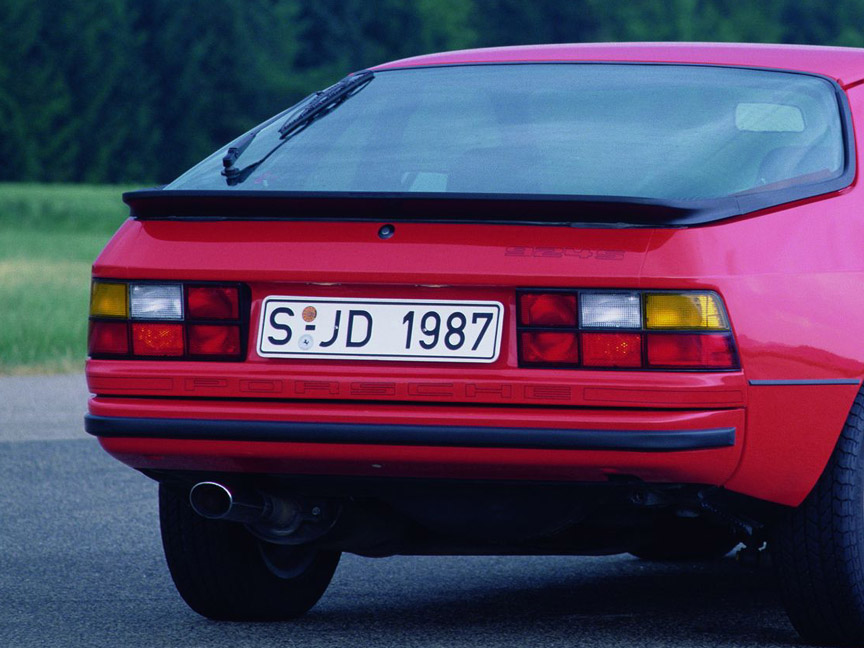


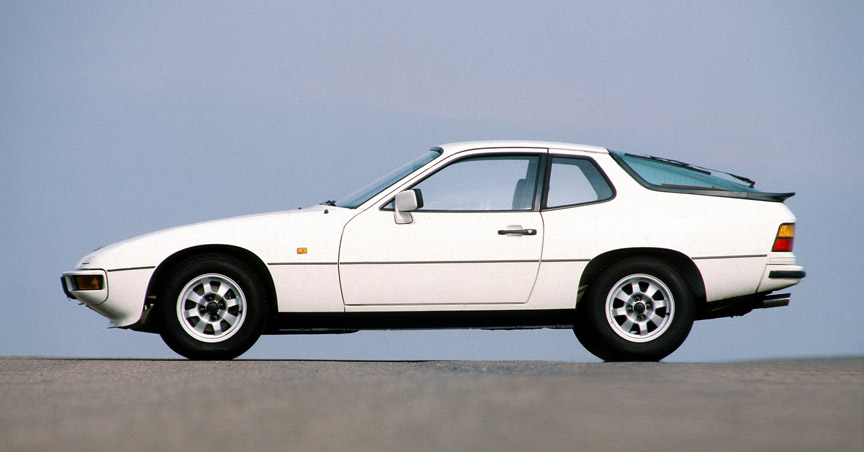







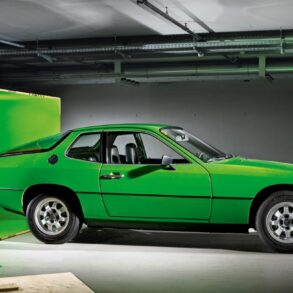

I could be an owner of this beauty soon, so I want to thank you by your publishment. It has lot of information of this car!. Do you have any recomendation of a marketplace to get stuff for this porsche 924 either in europe or in USA? Im from south america, Argentina.
thanks again!
Nicolas
0